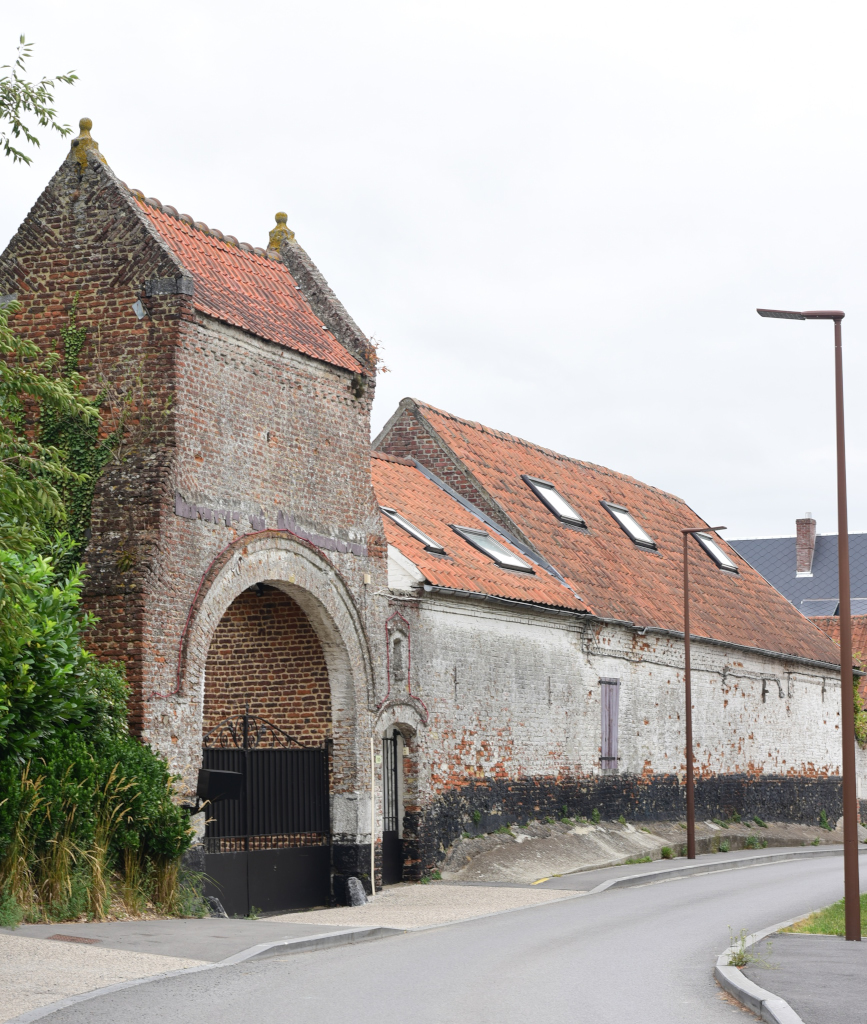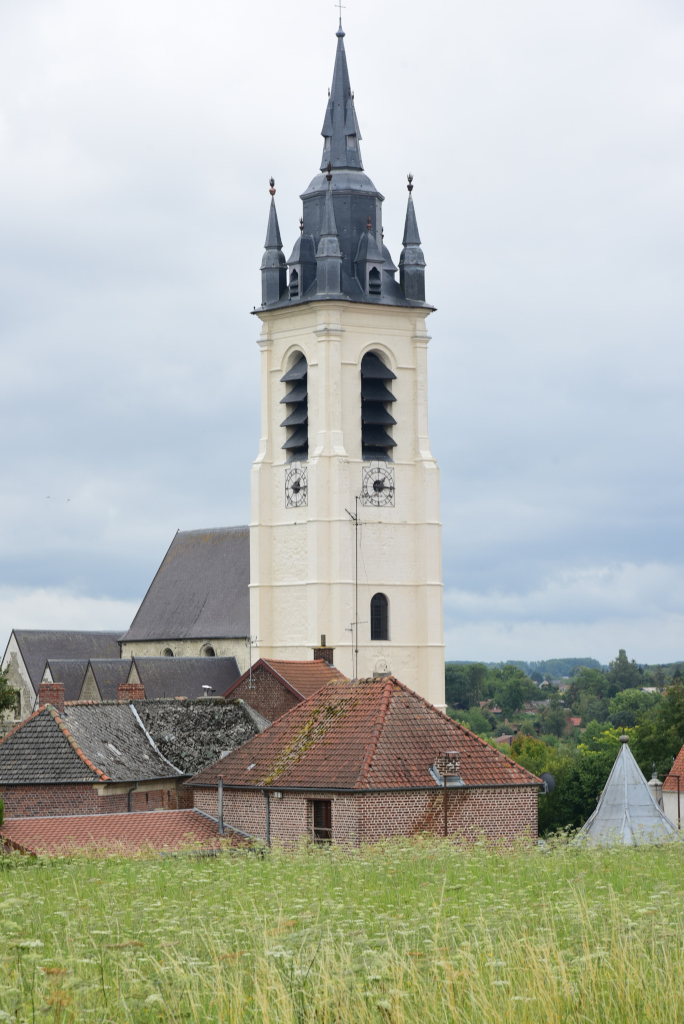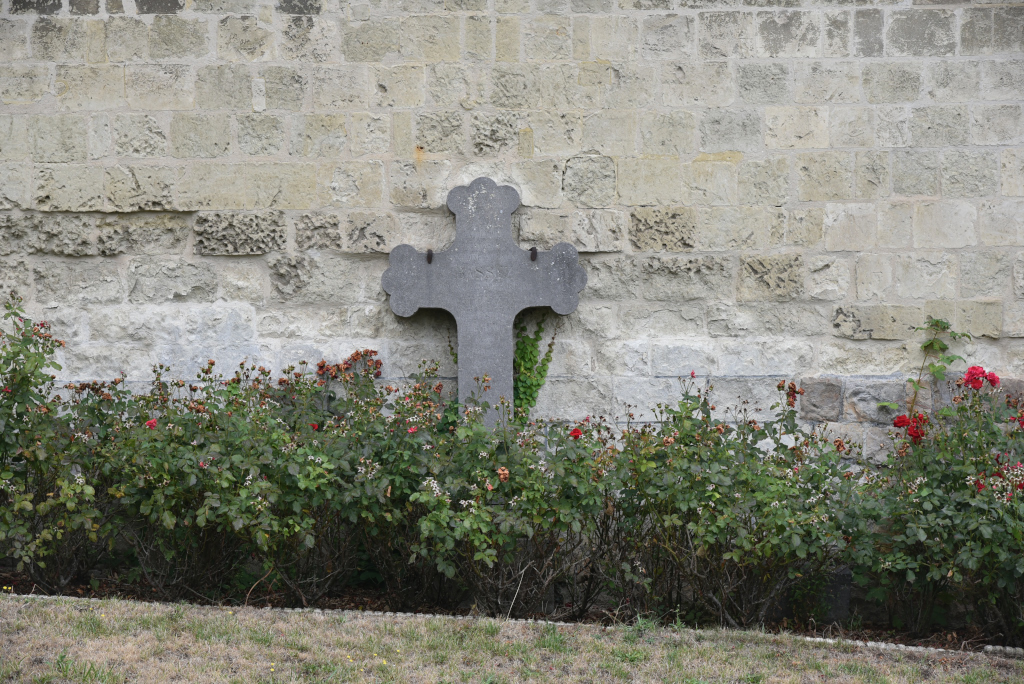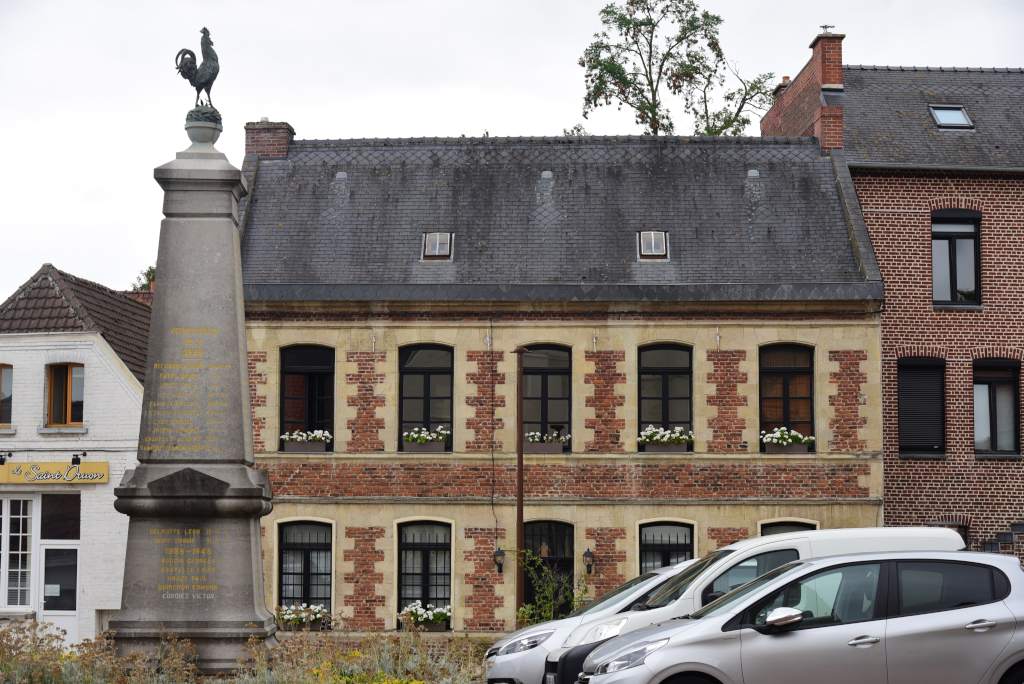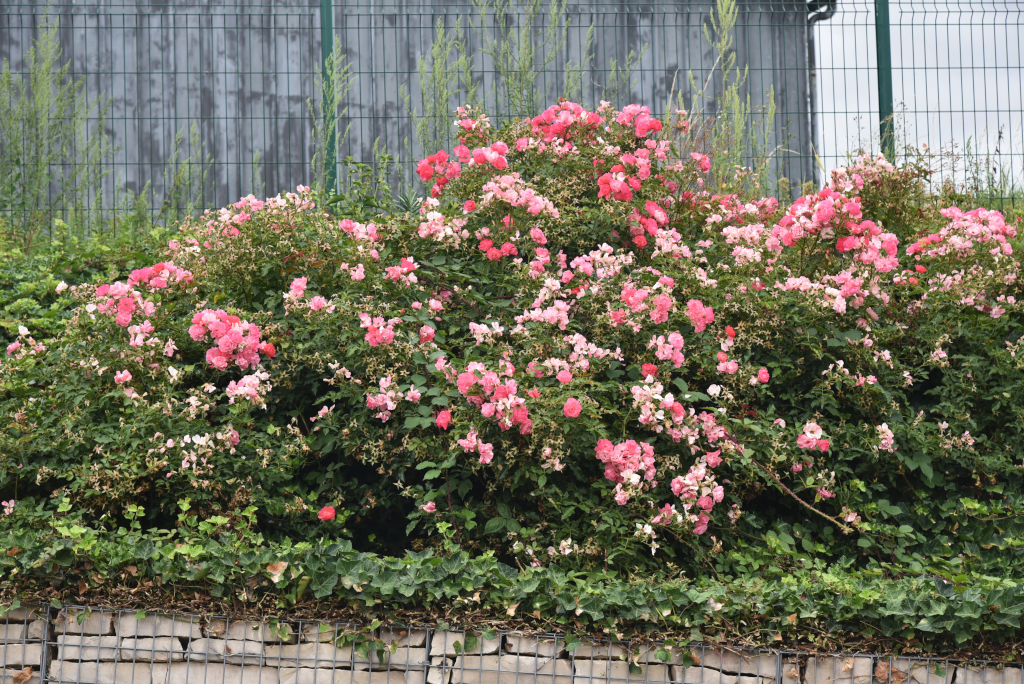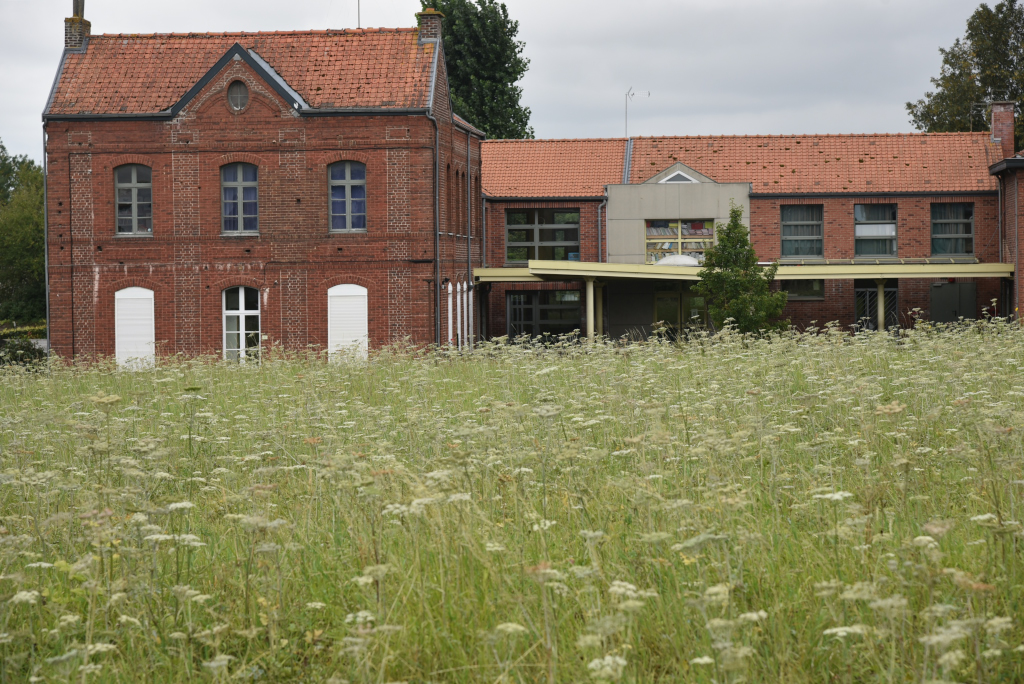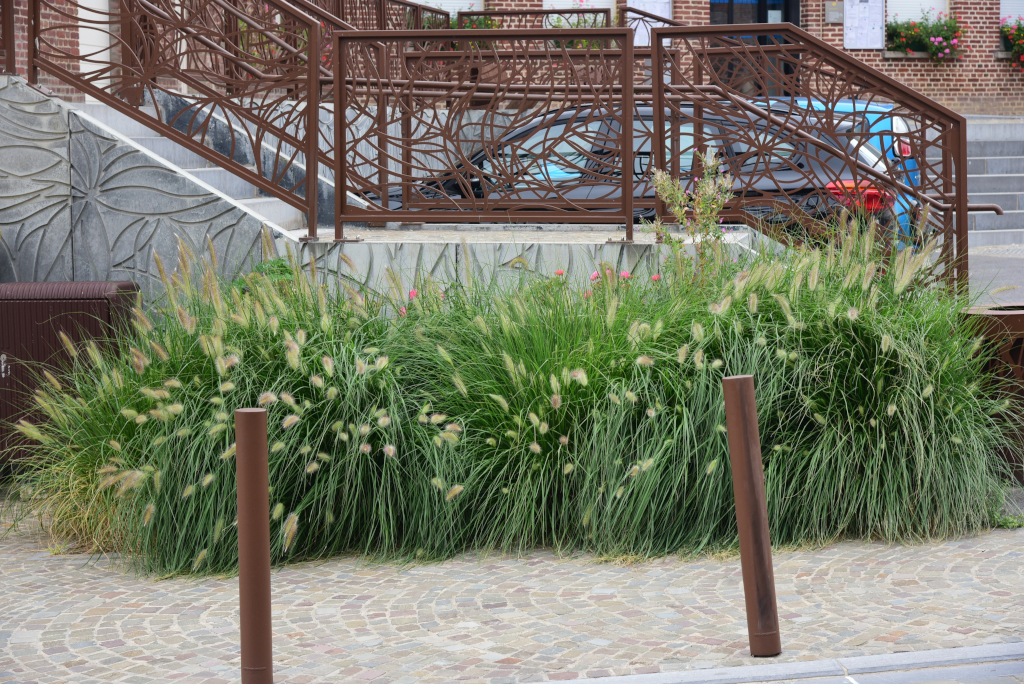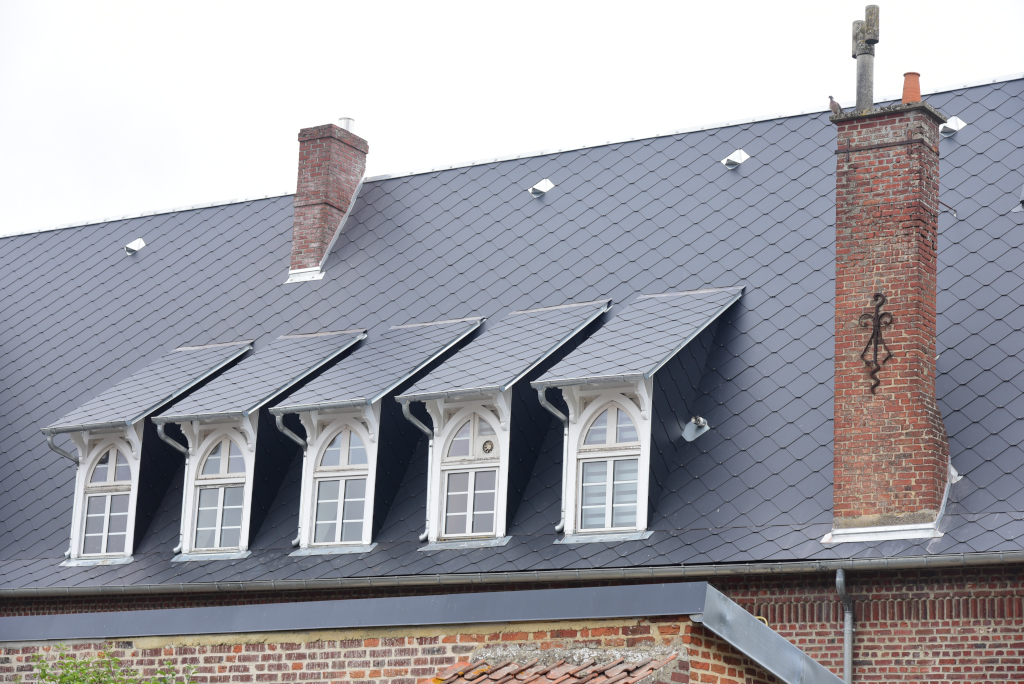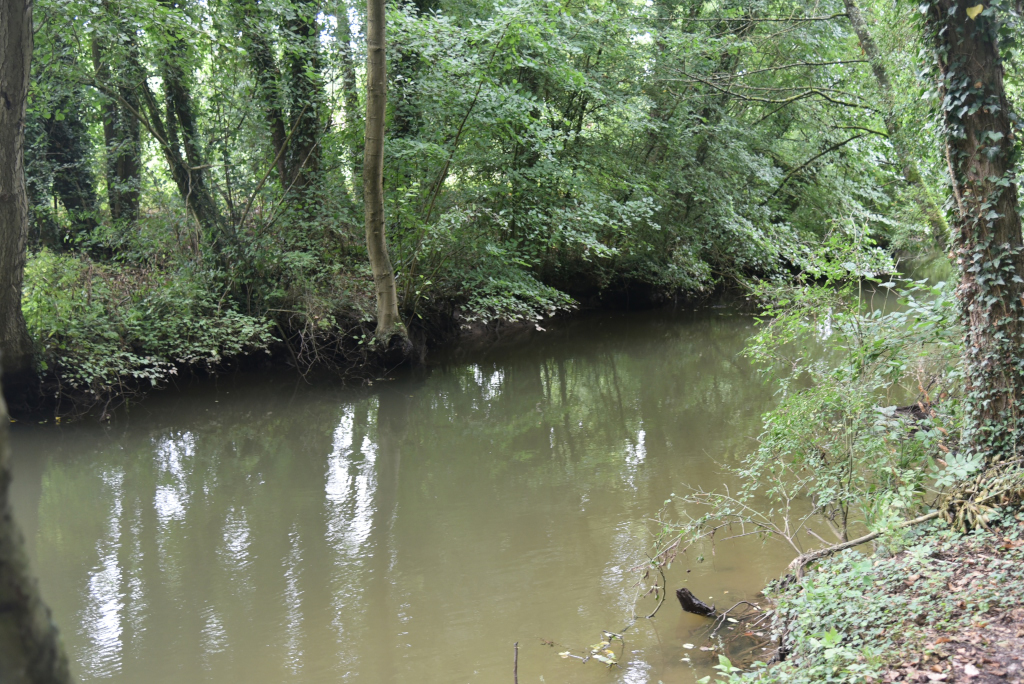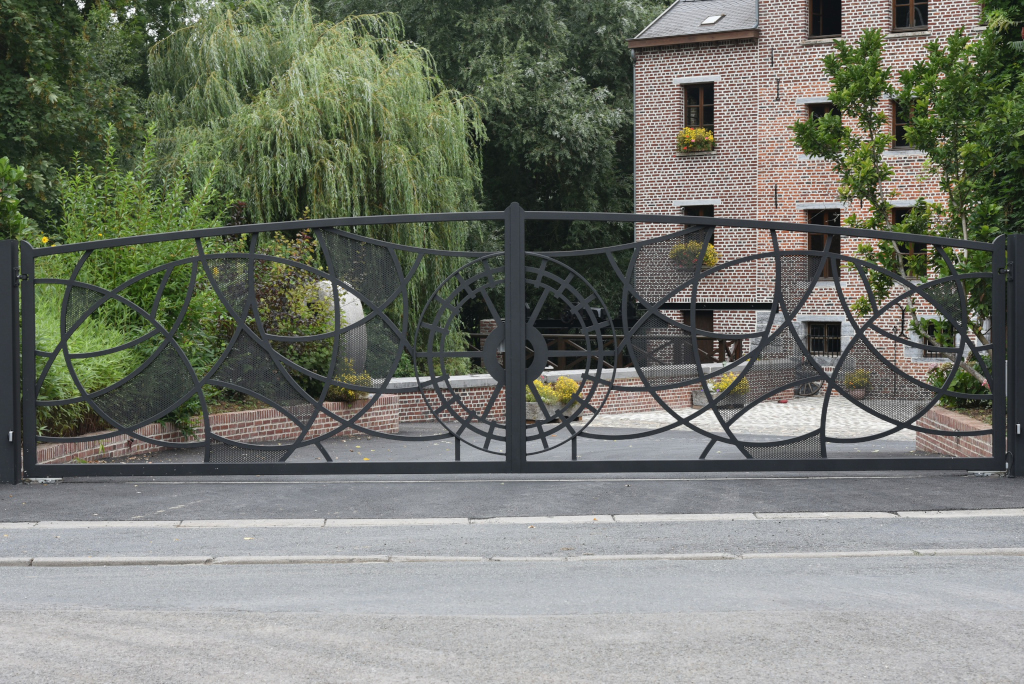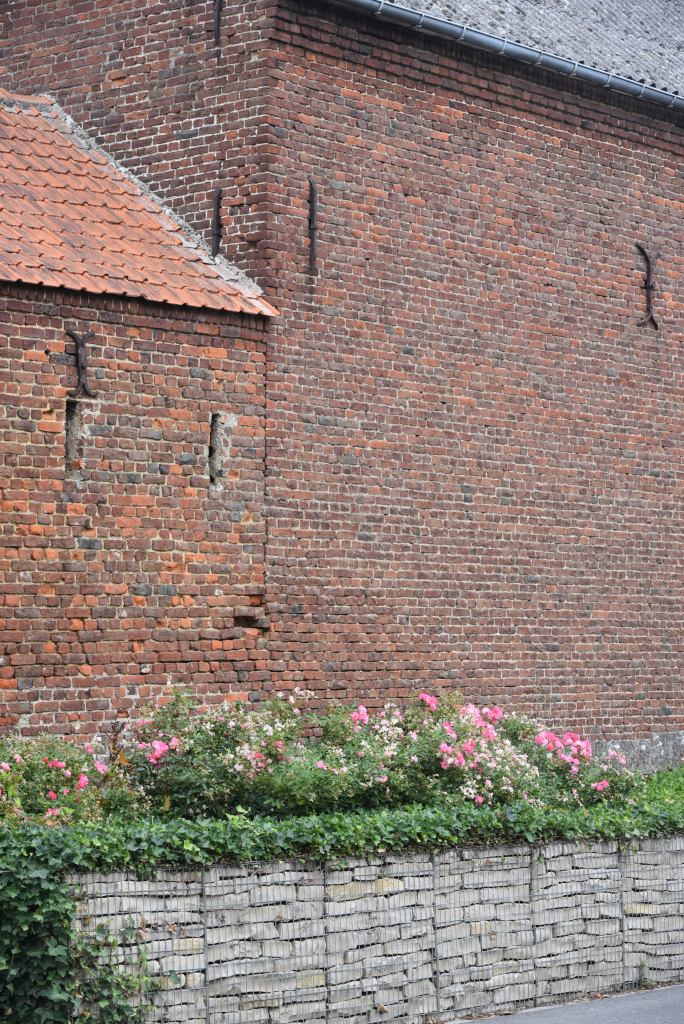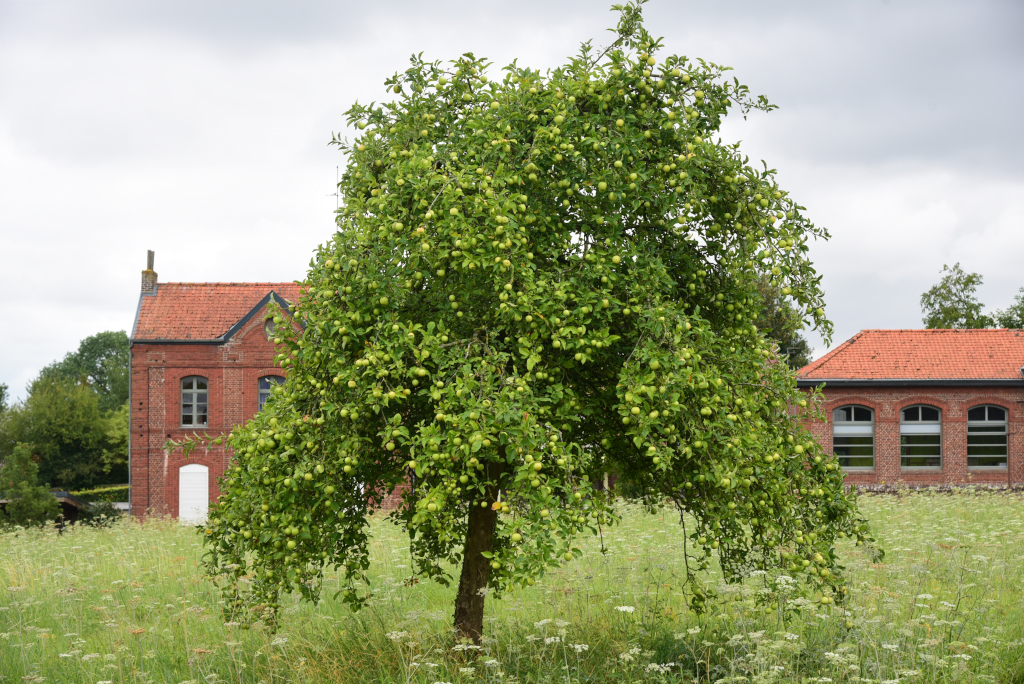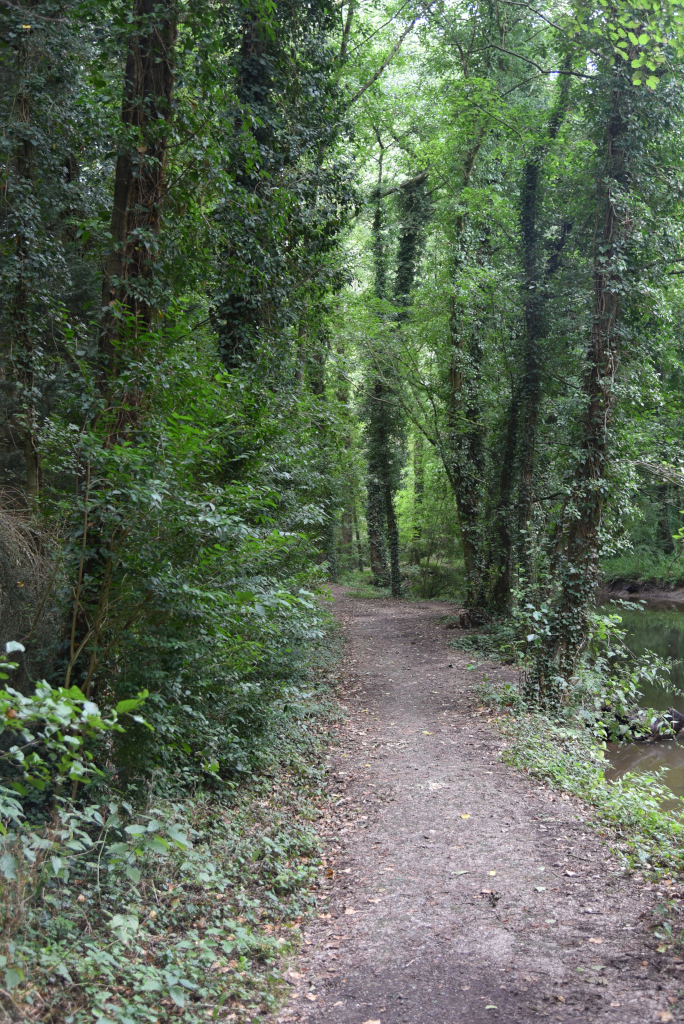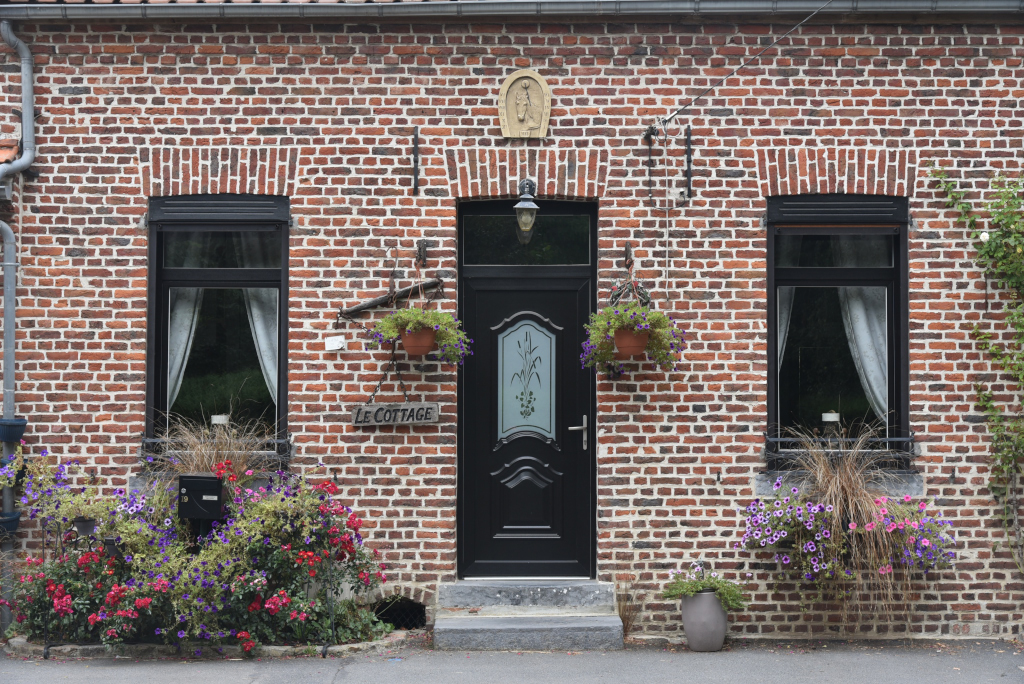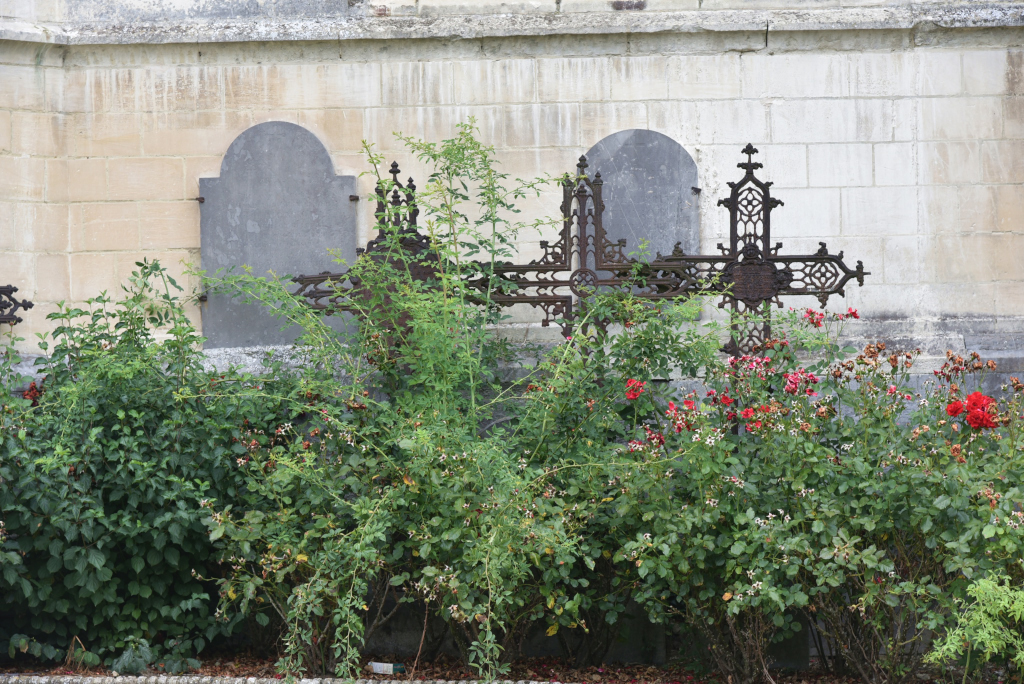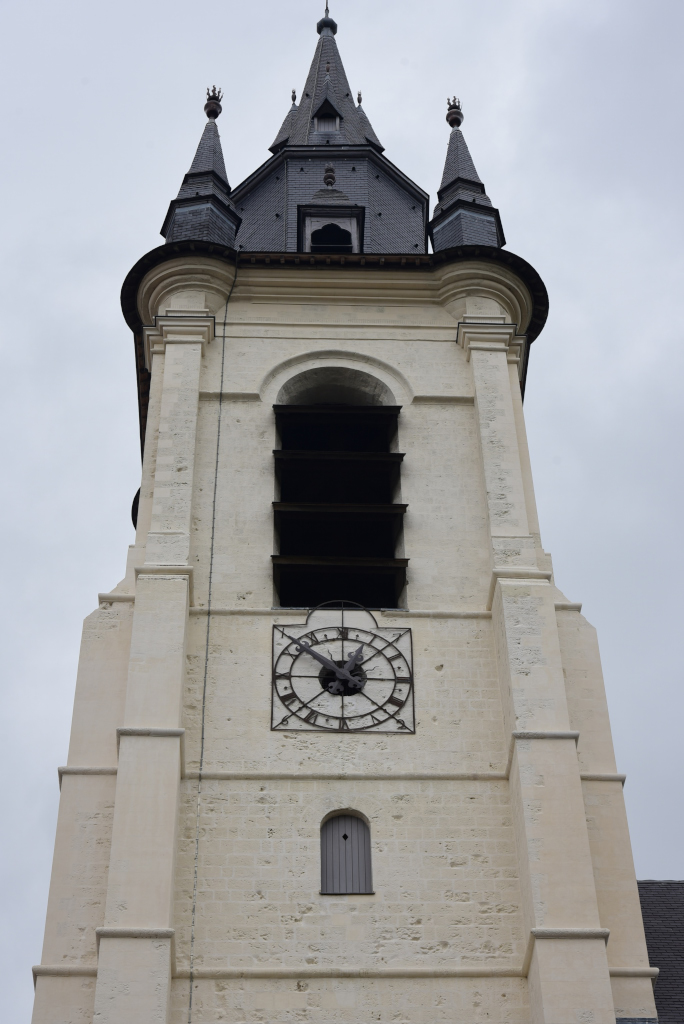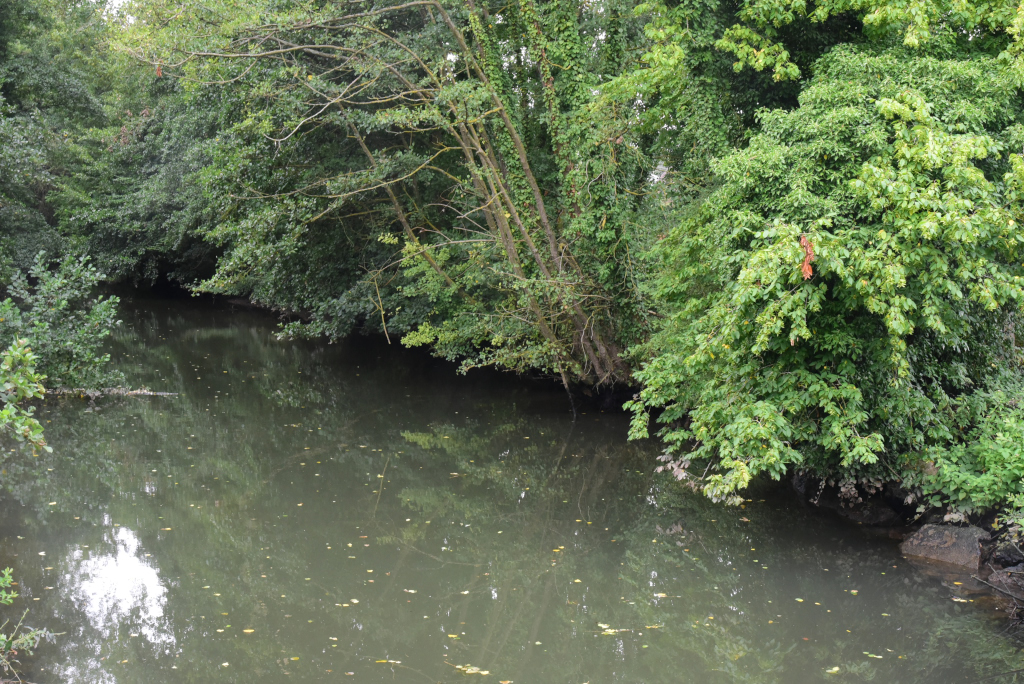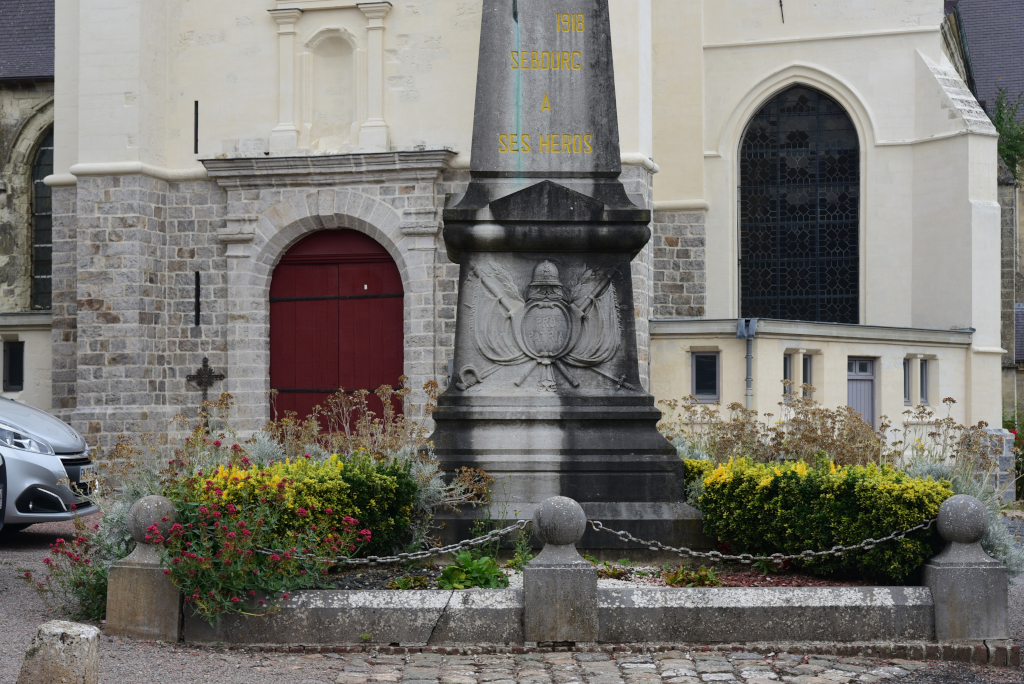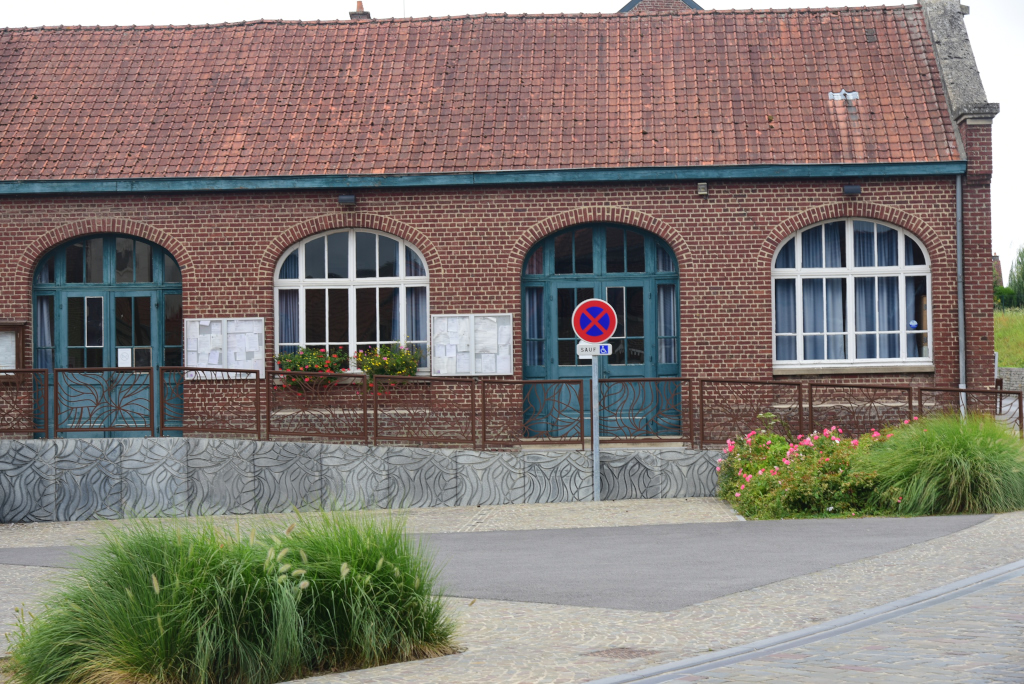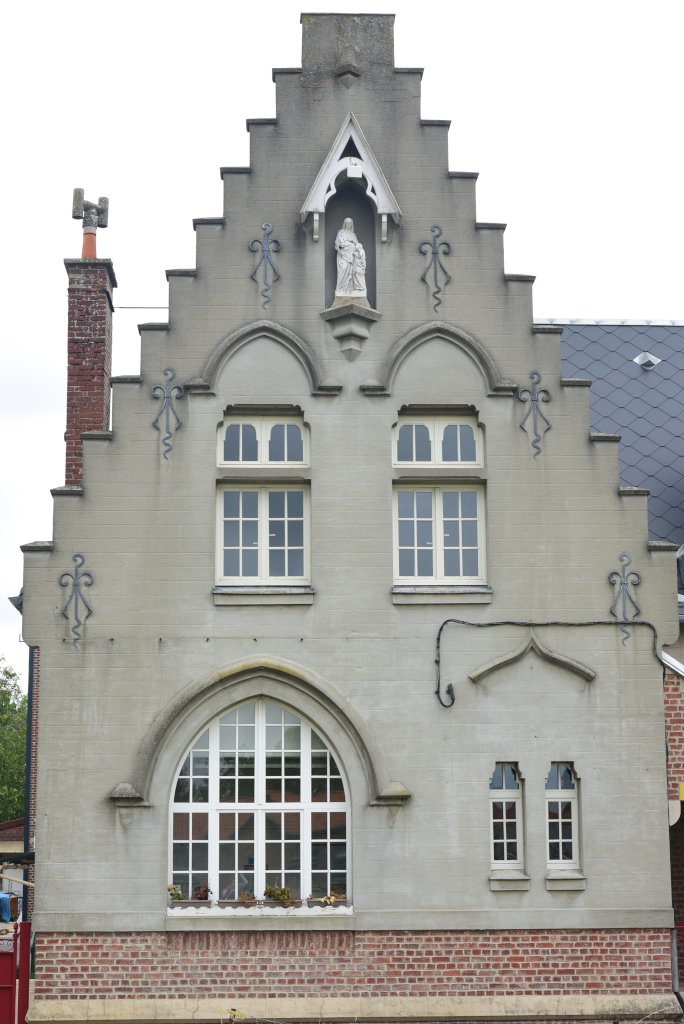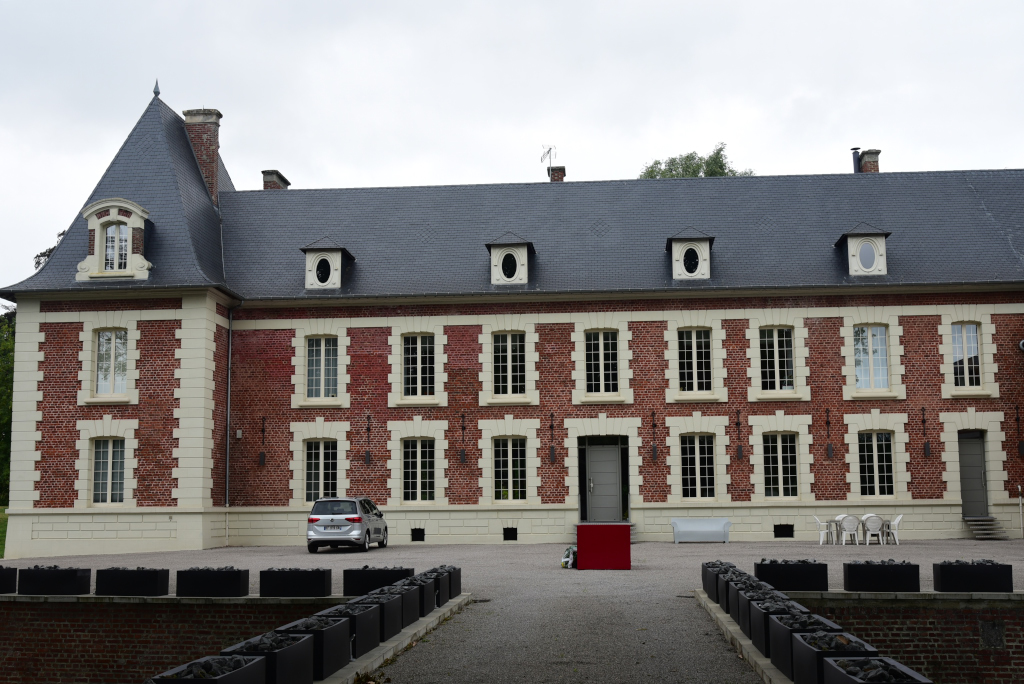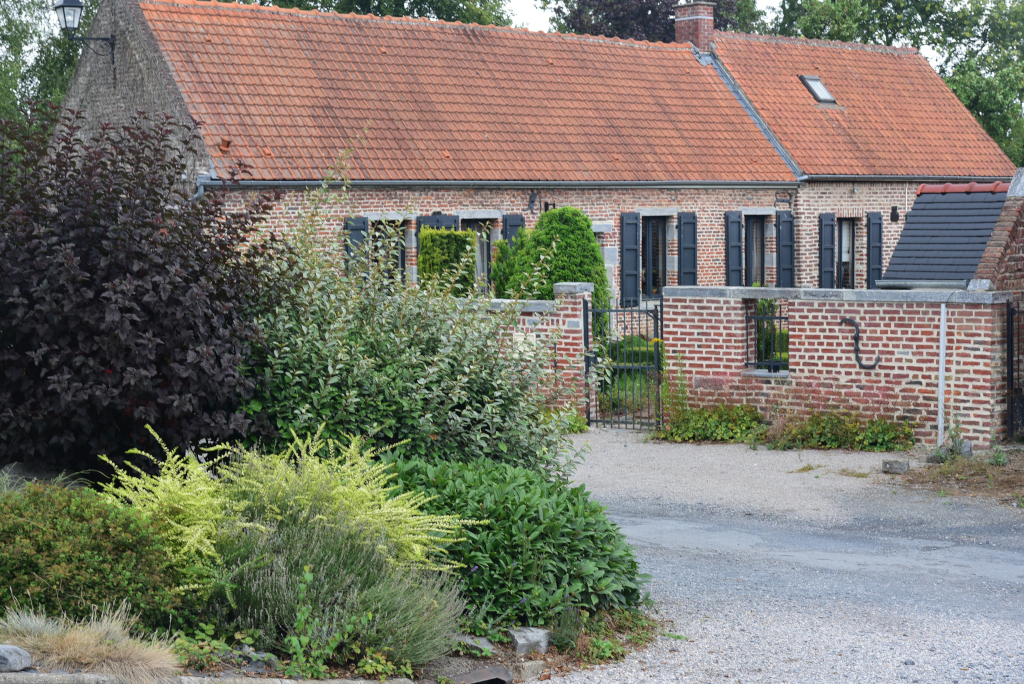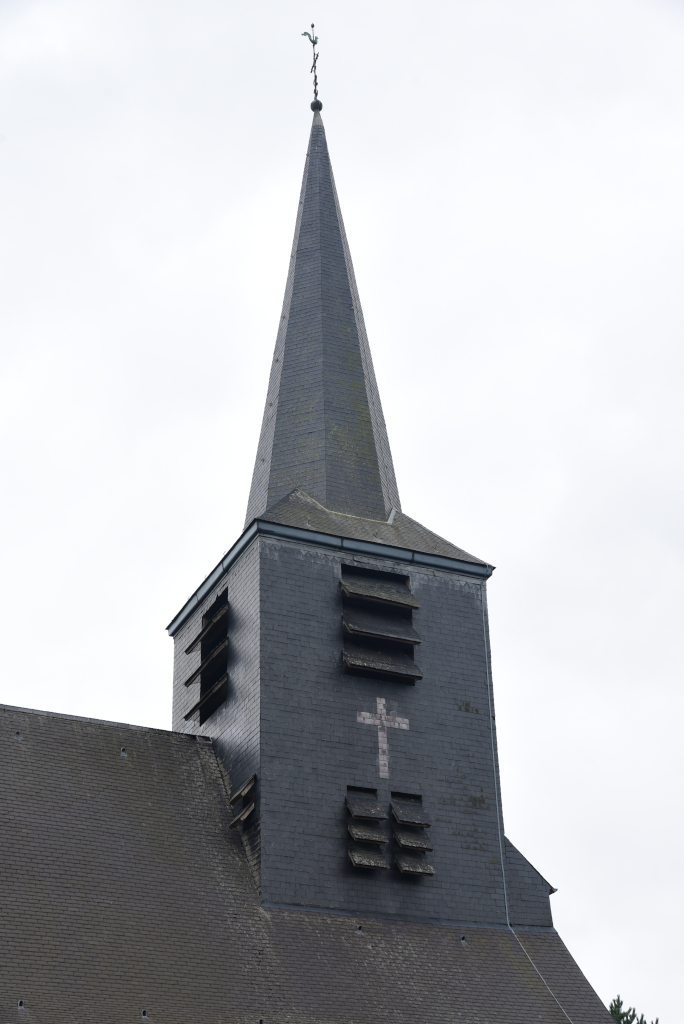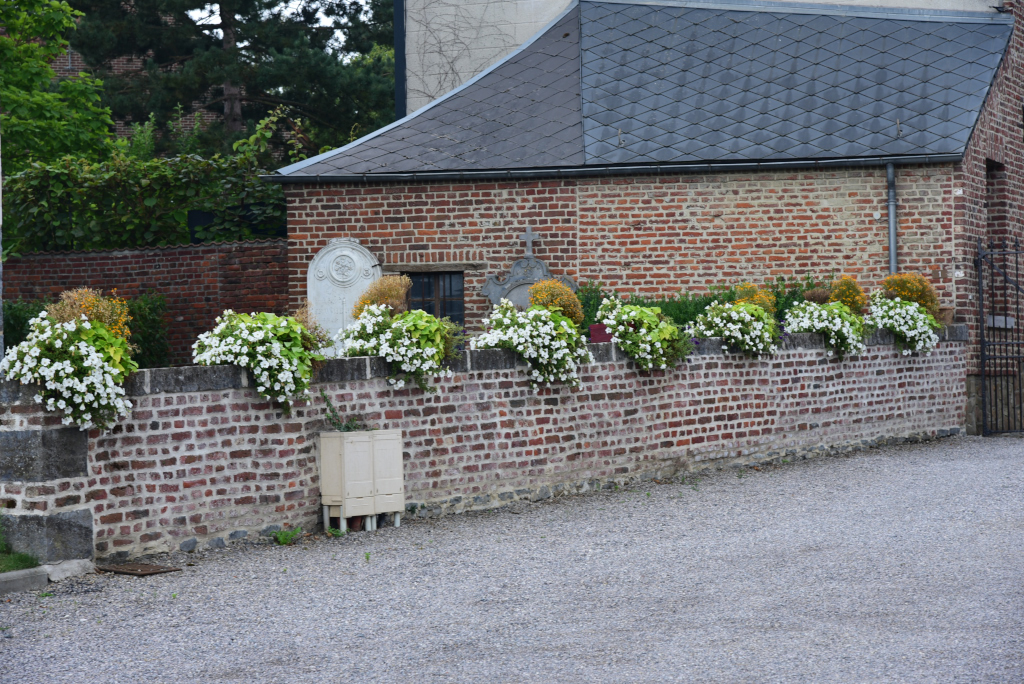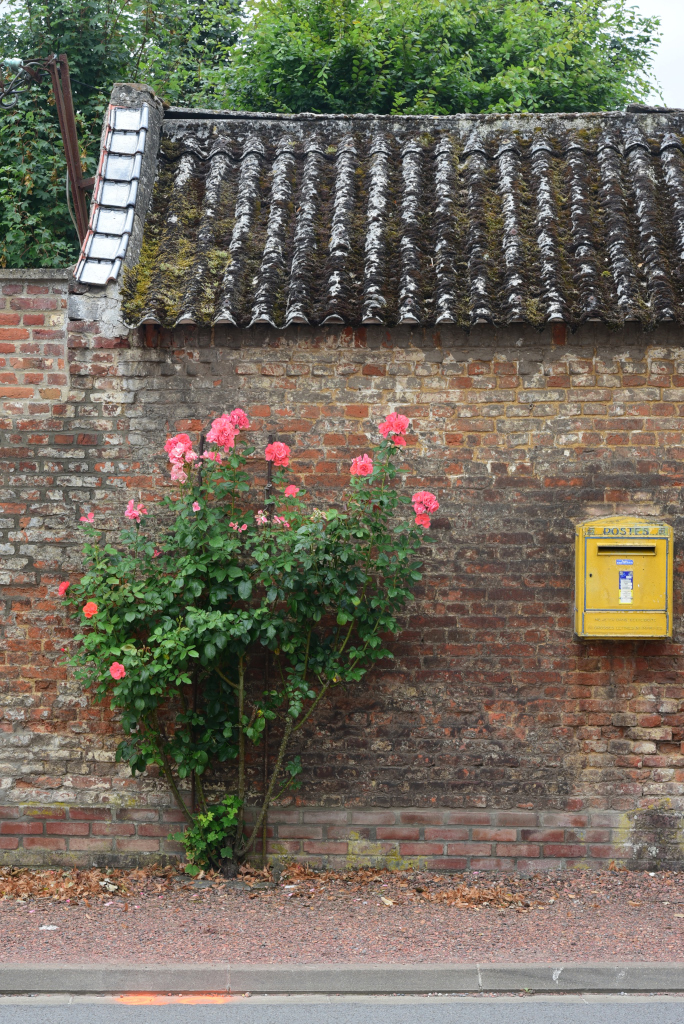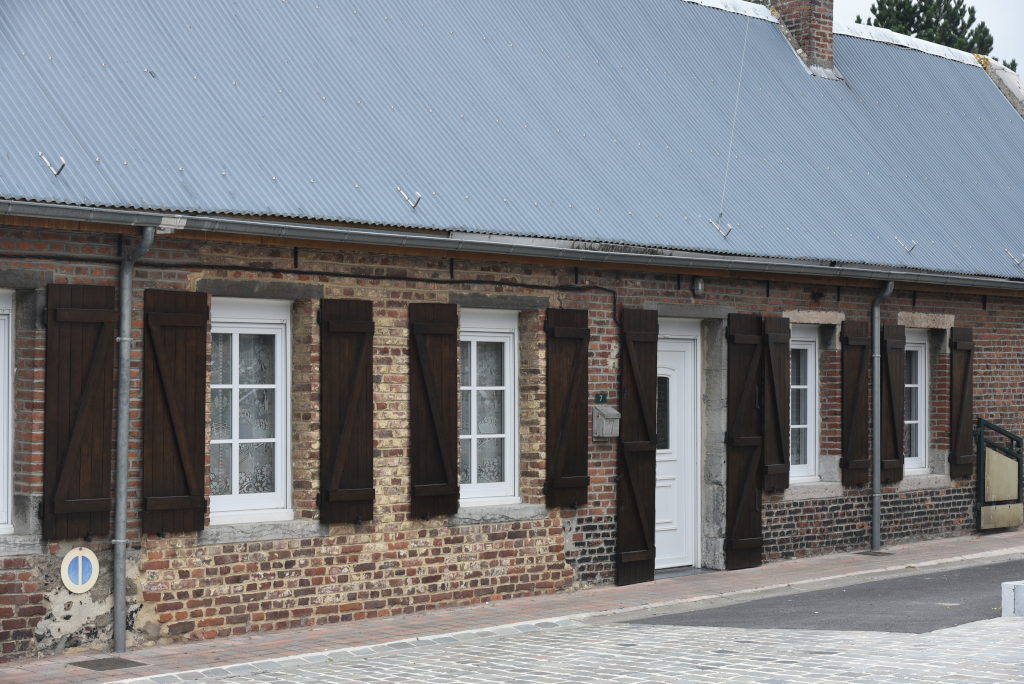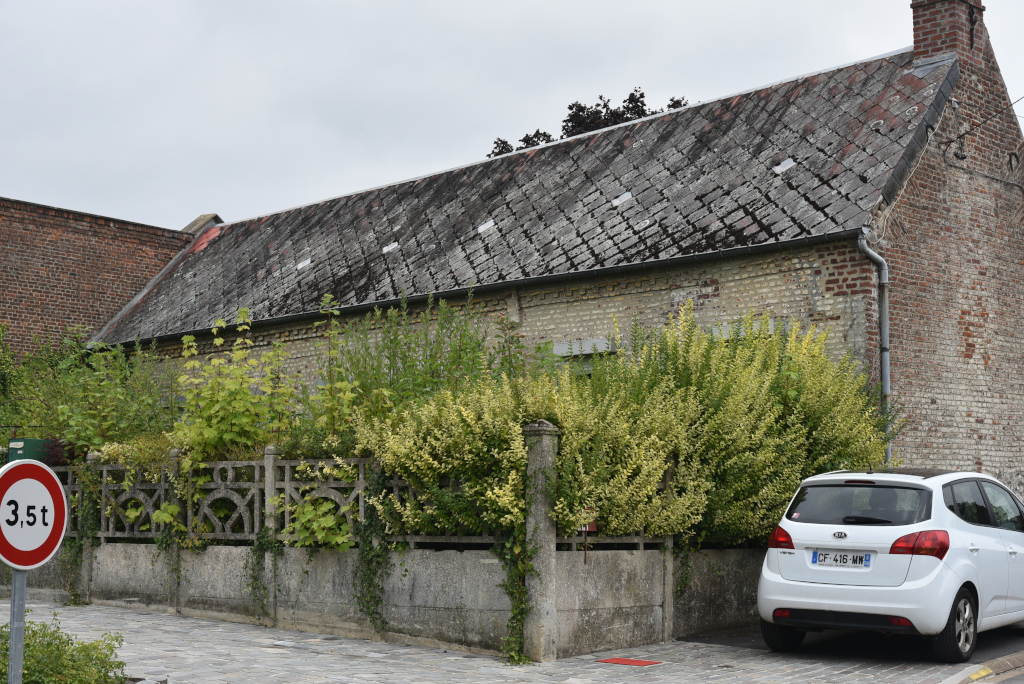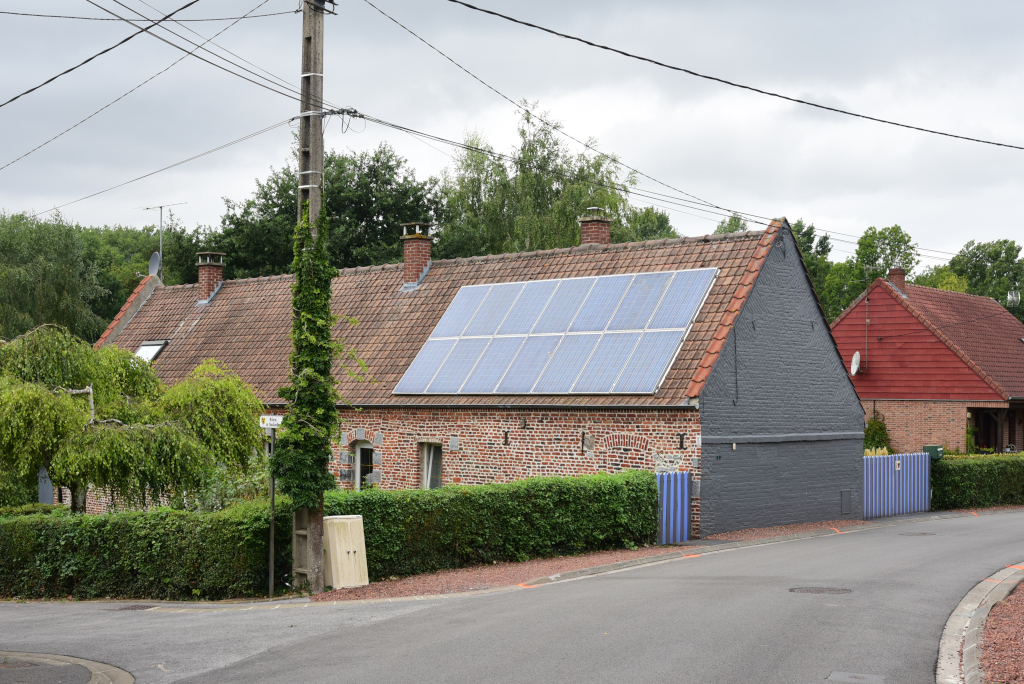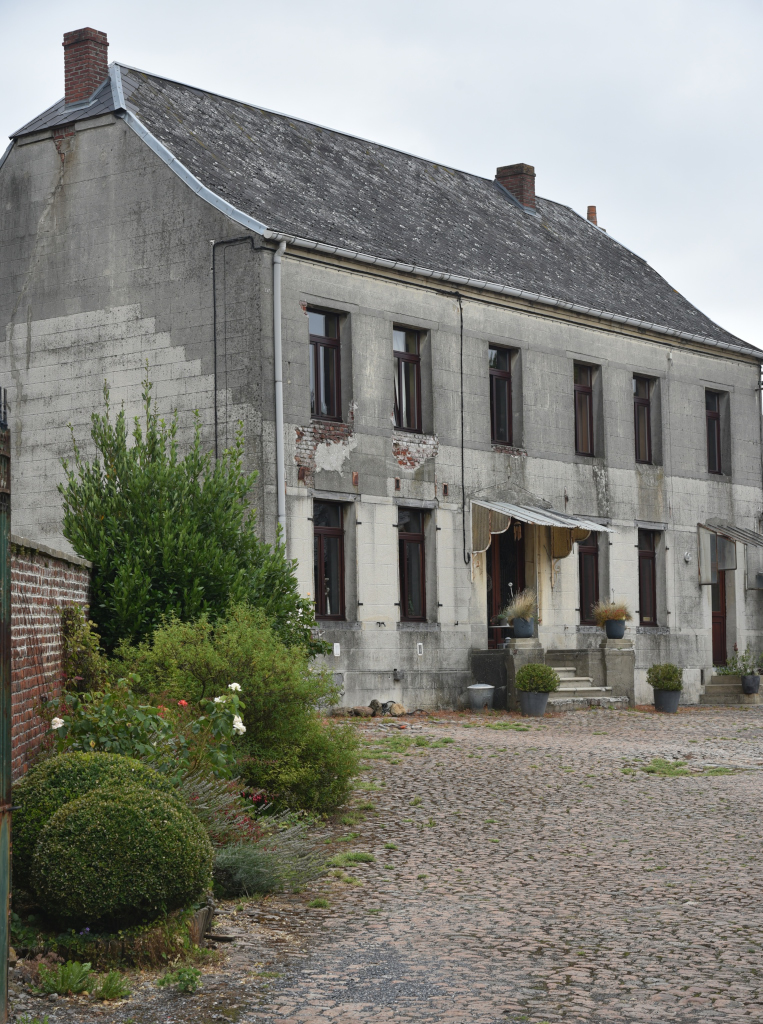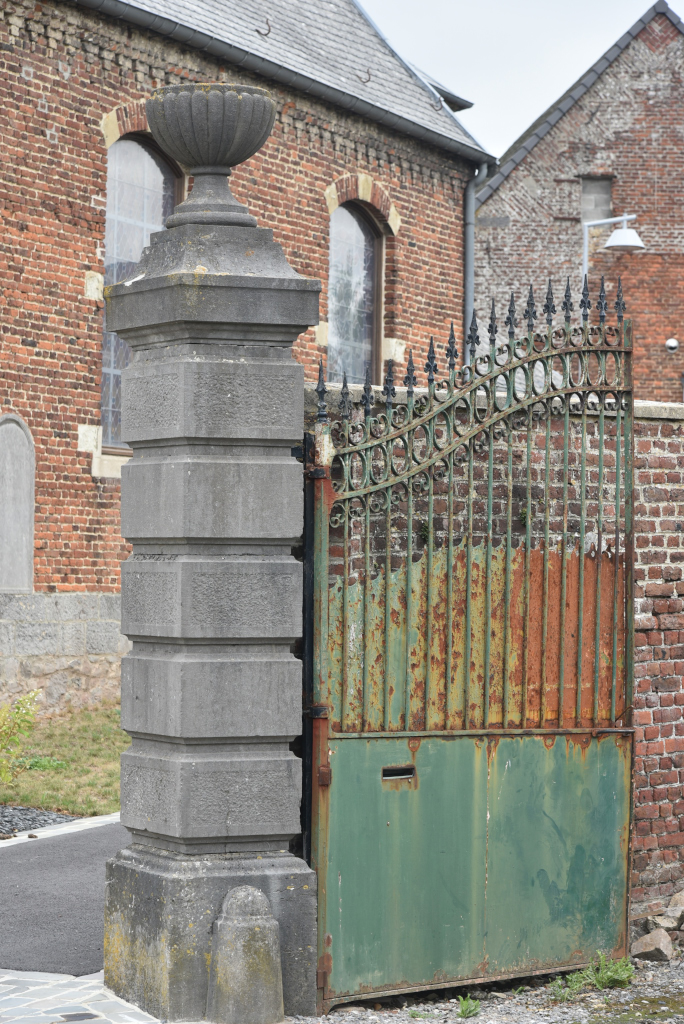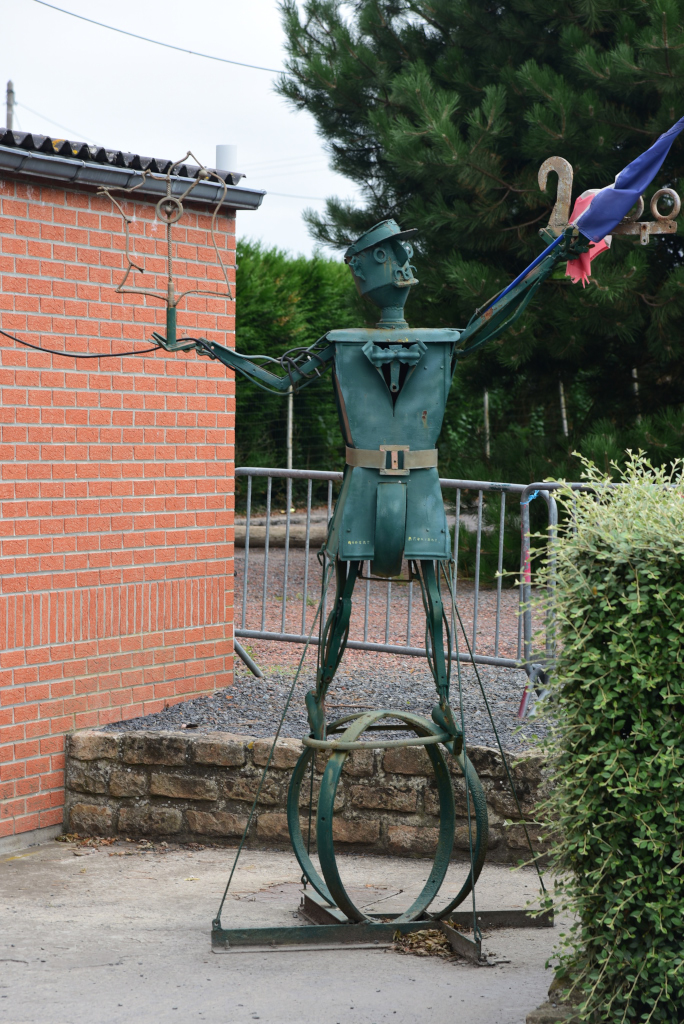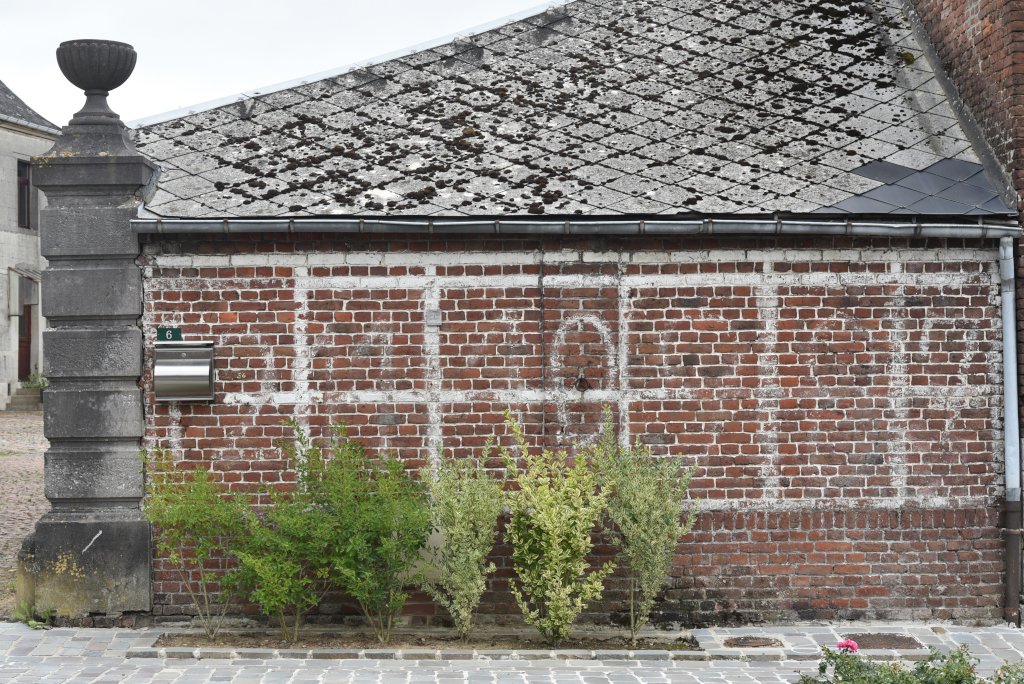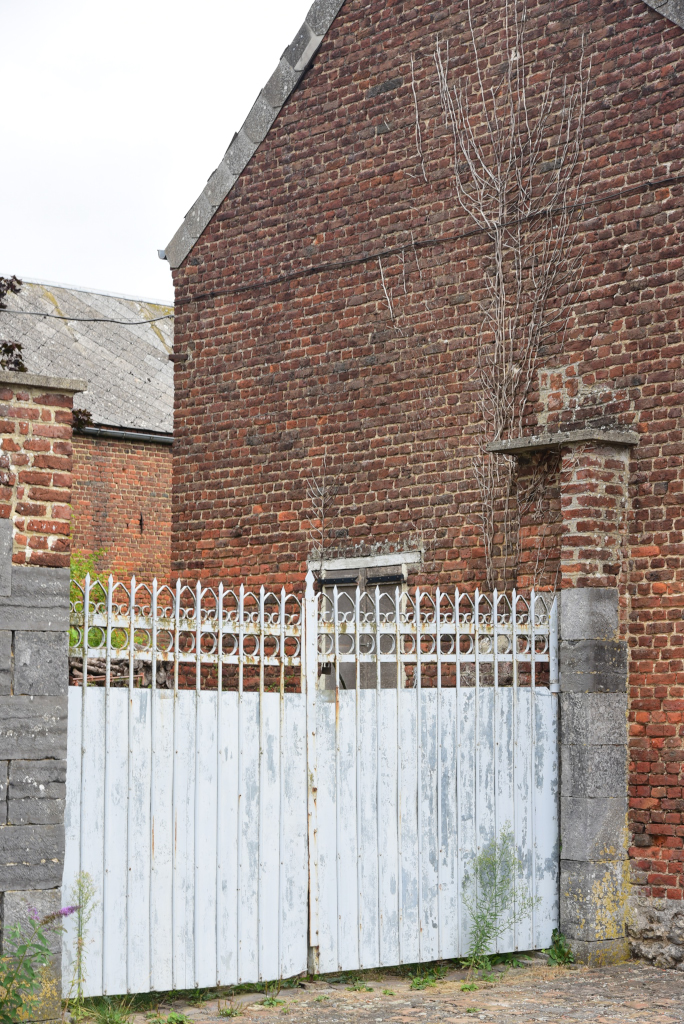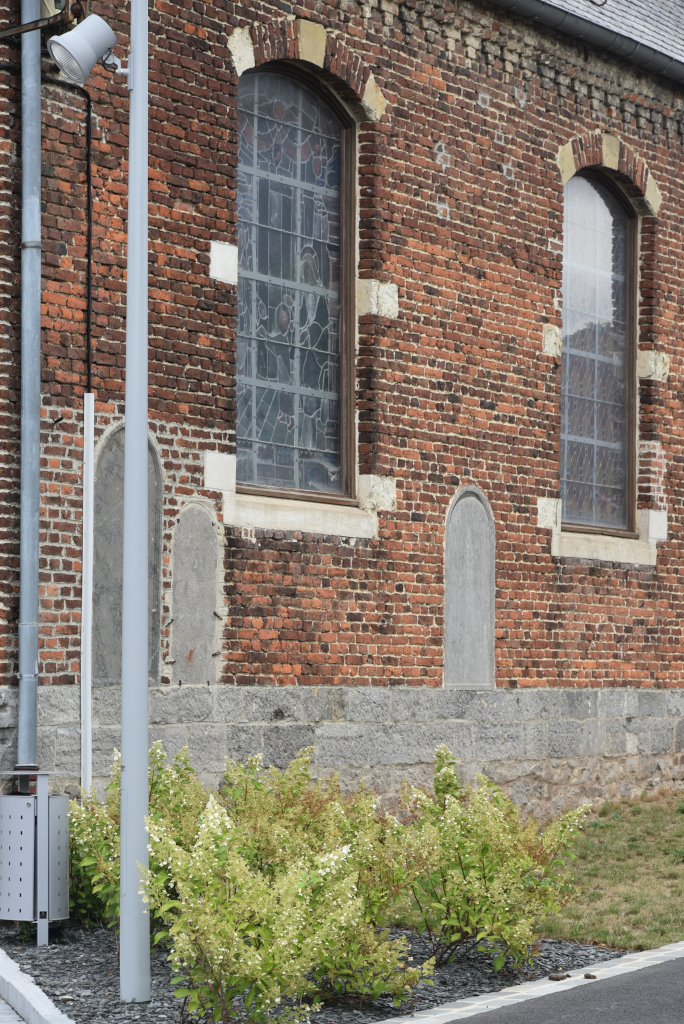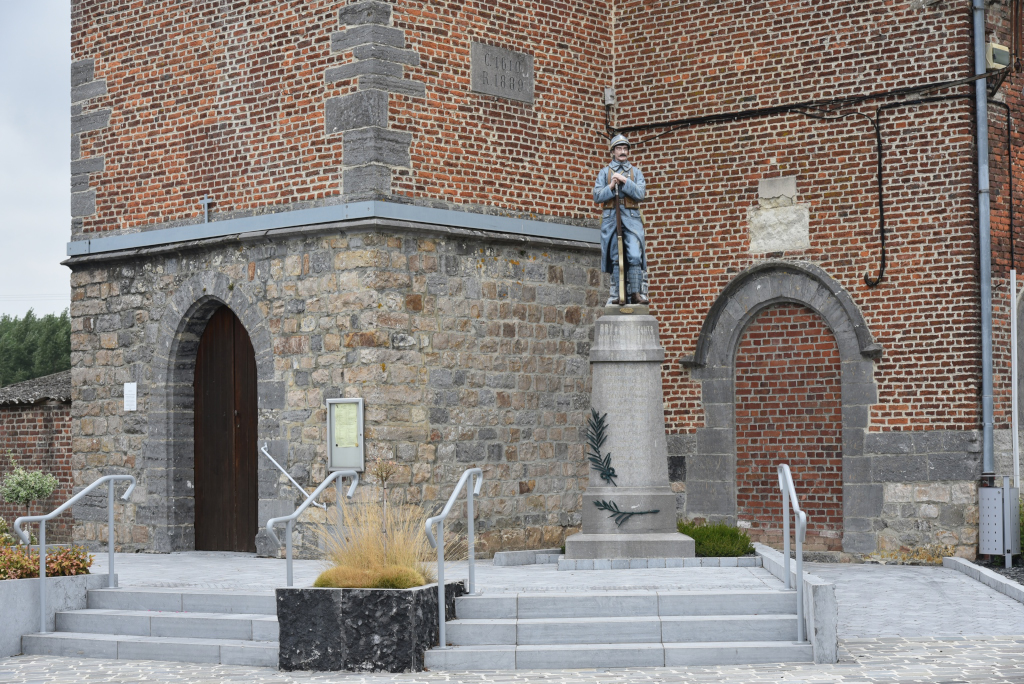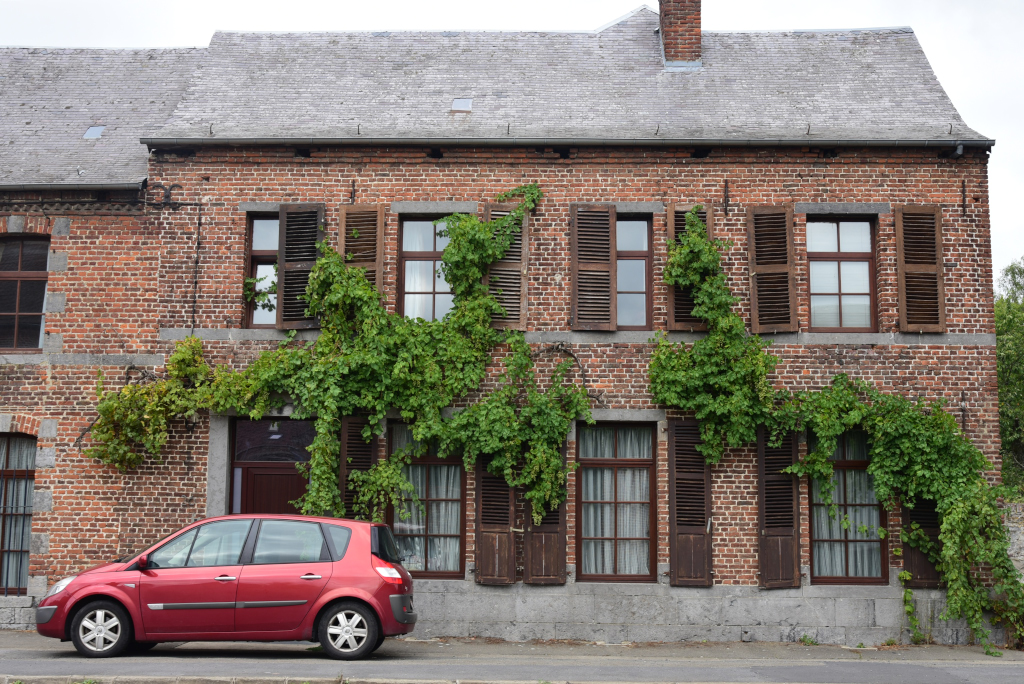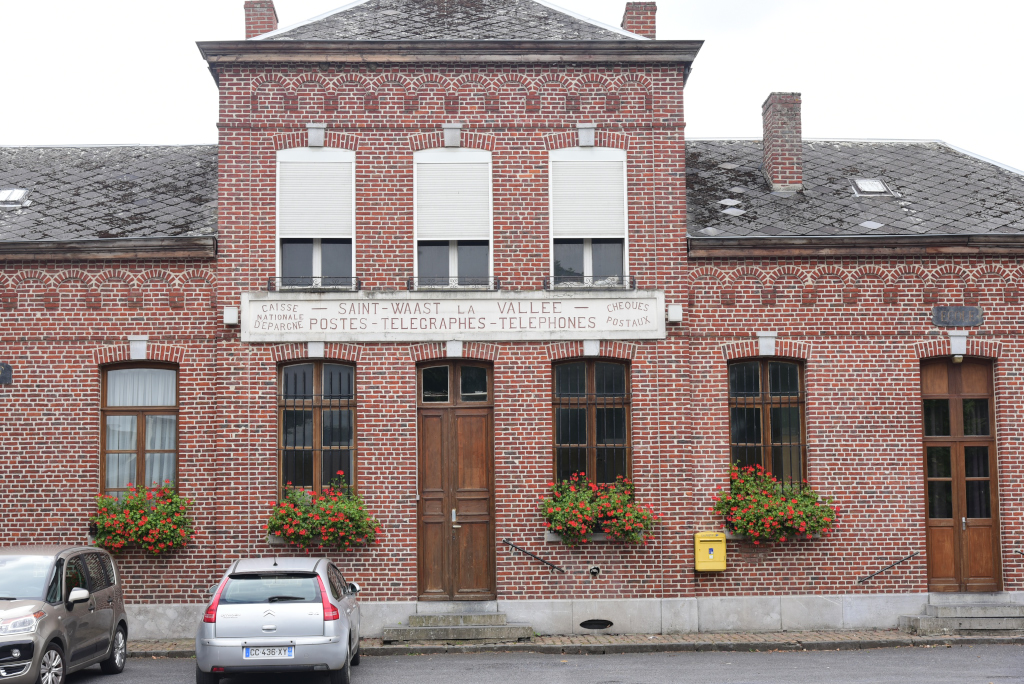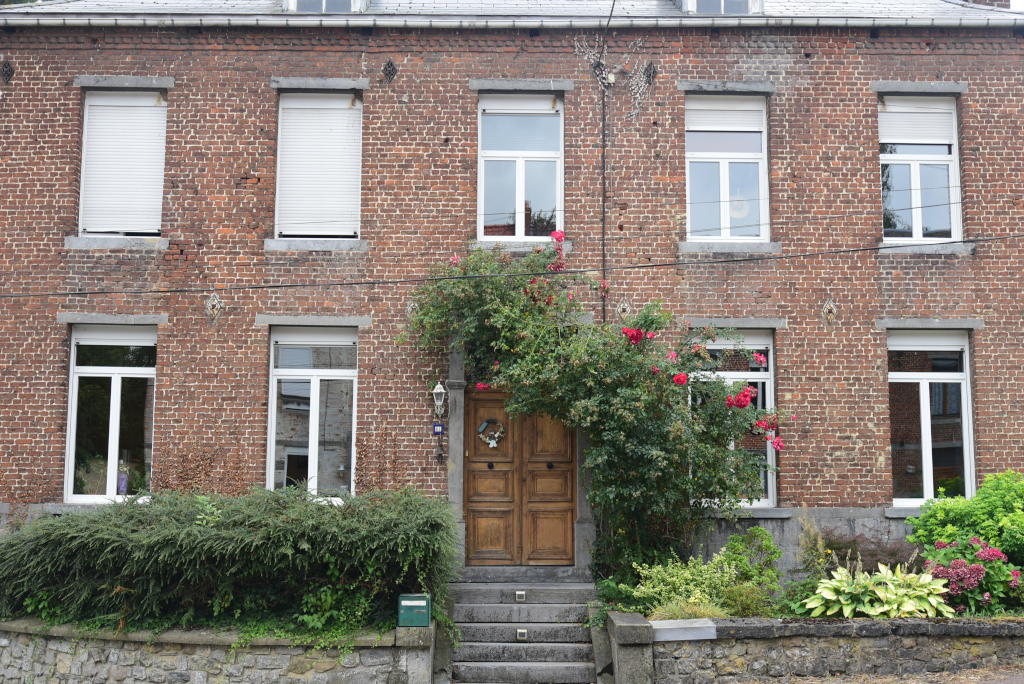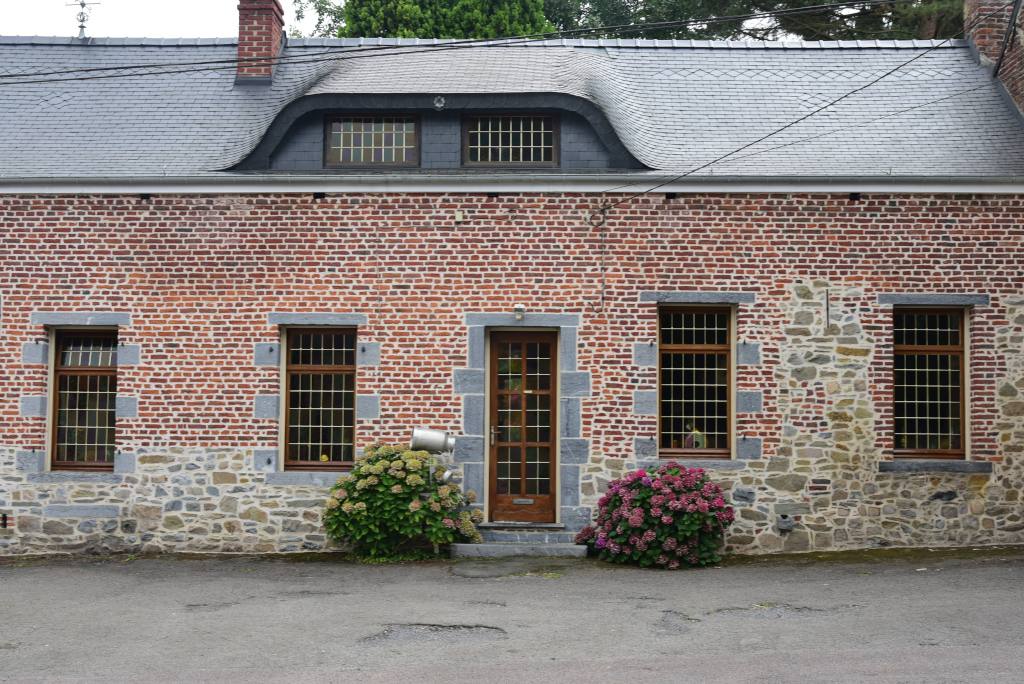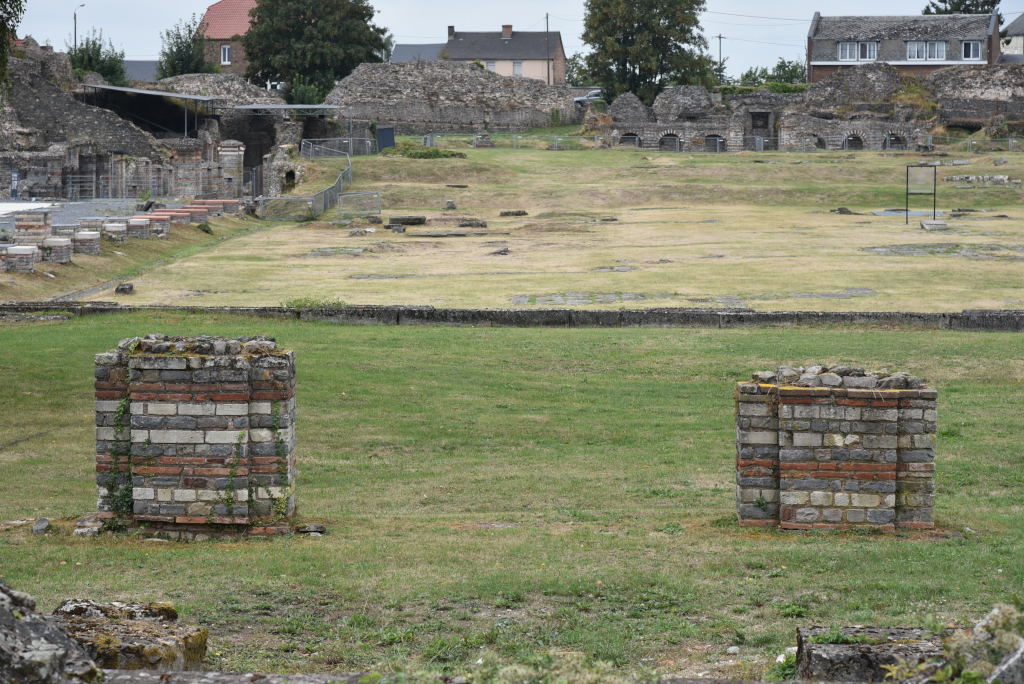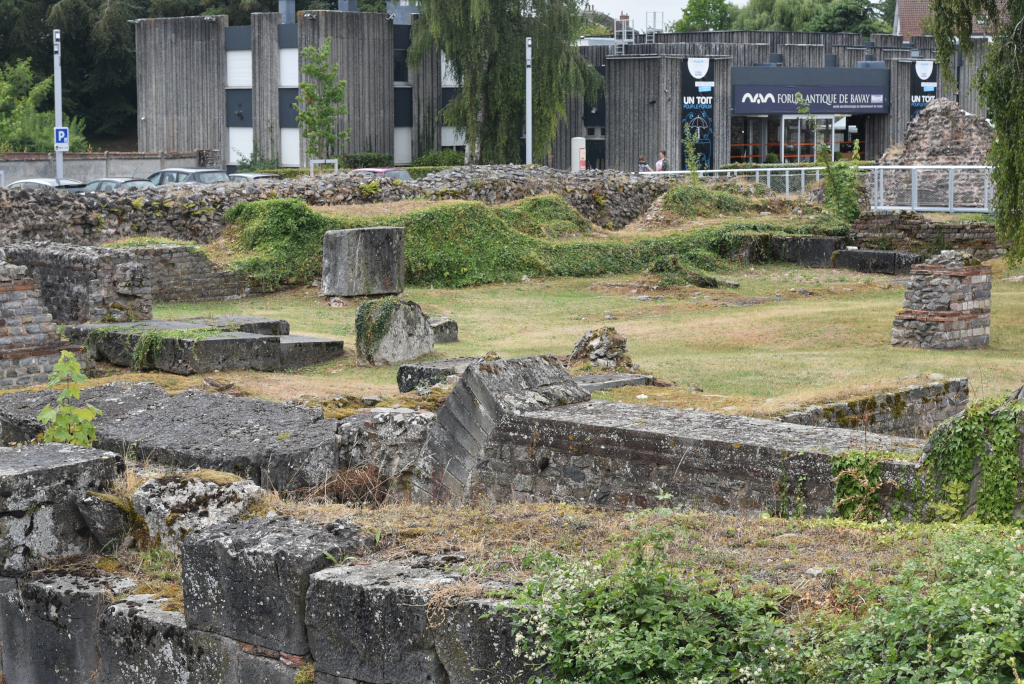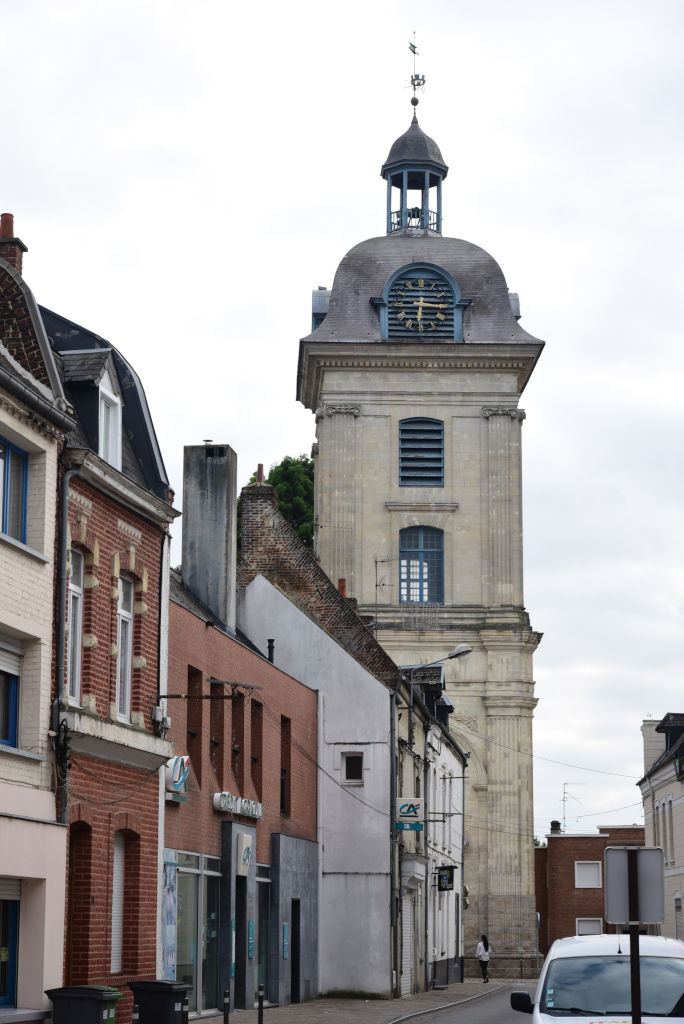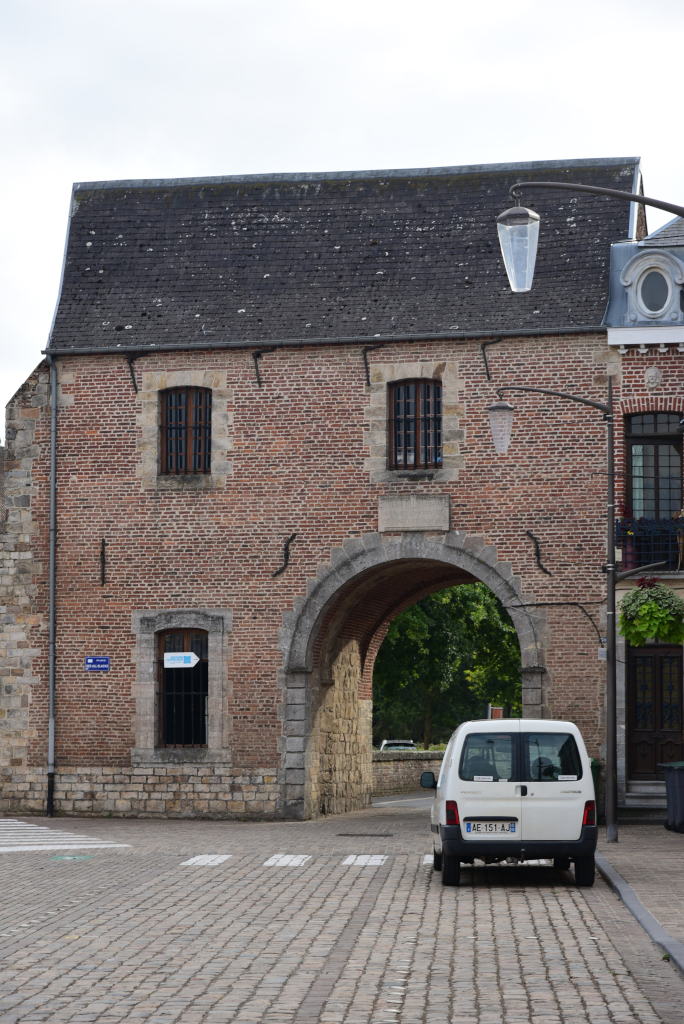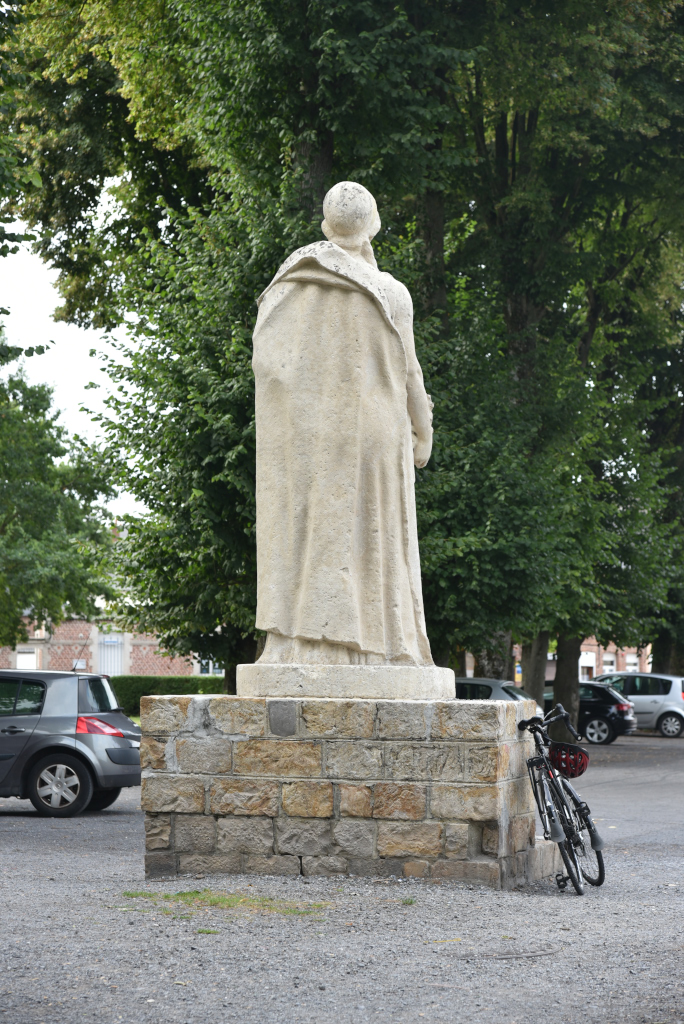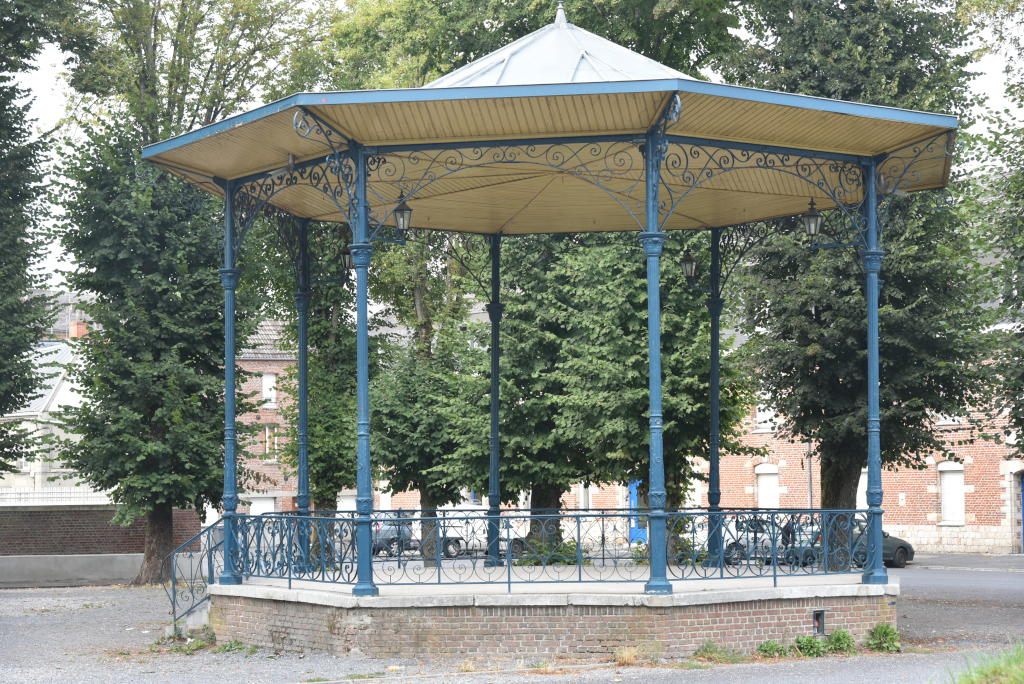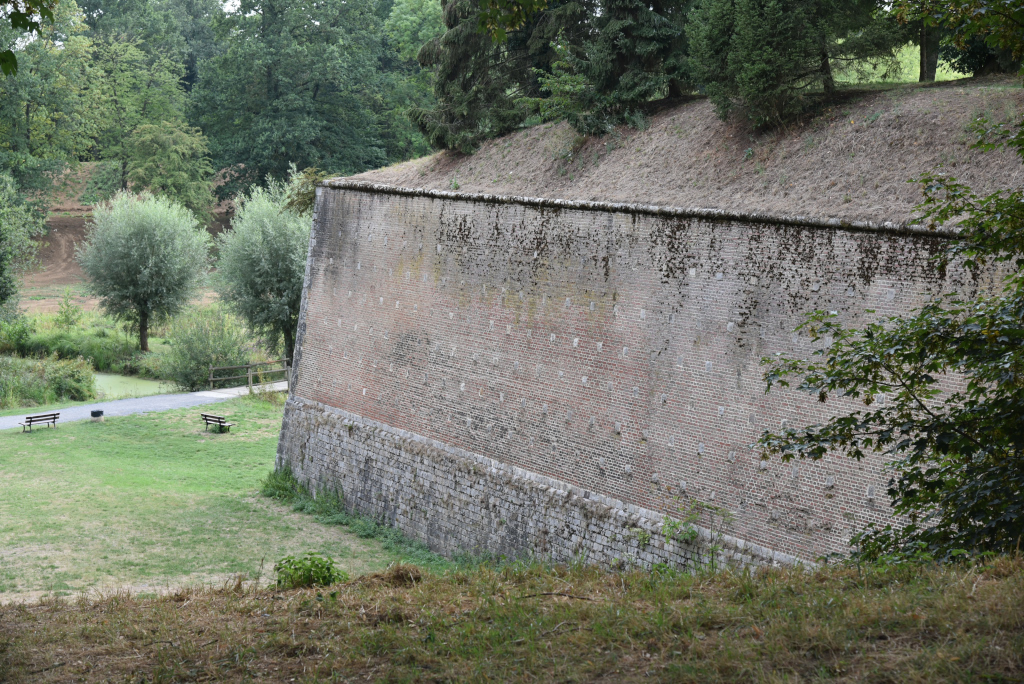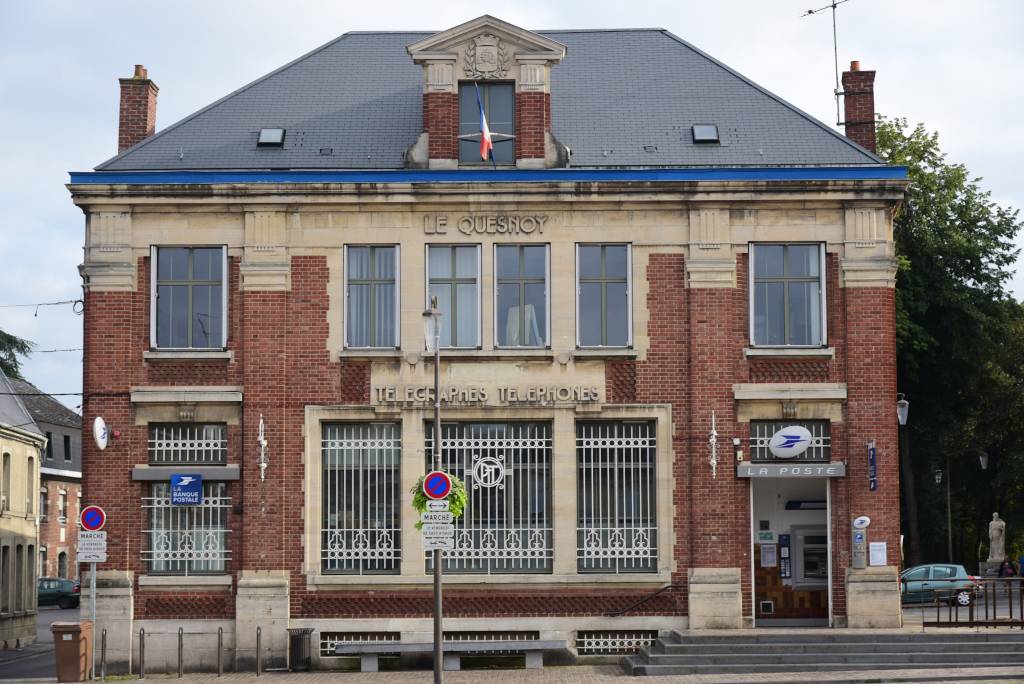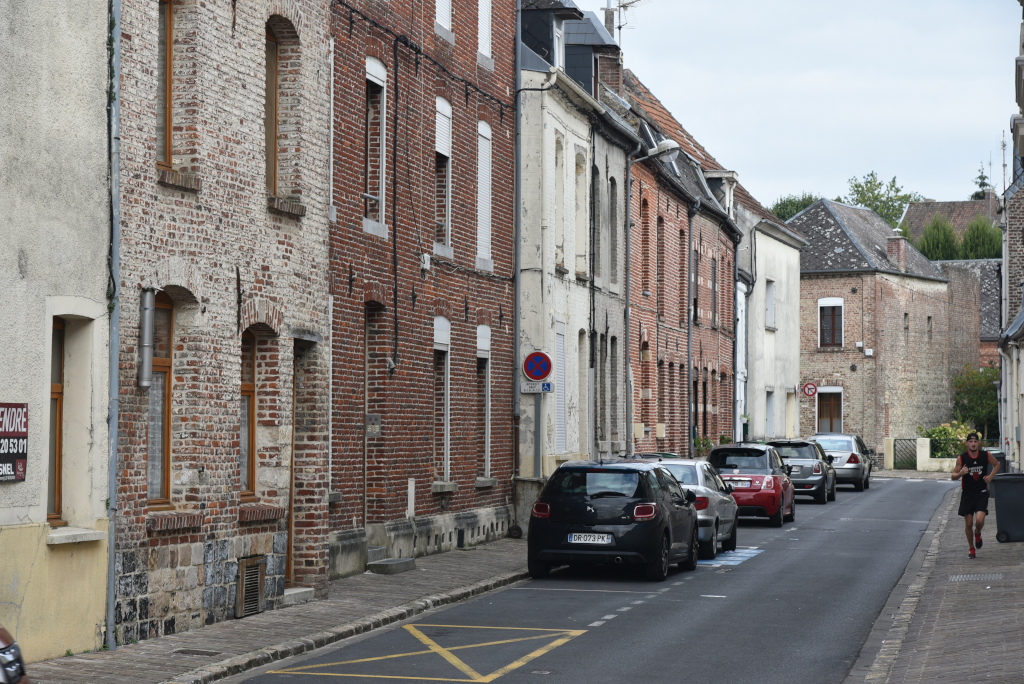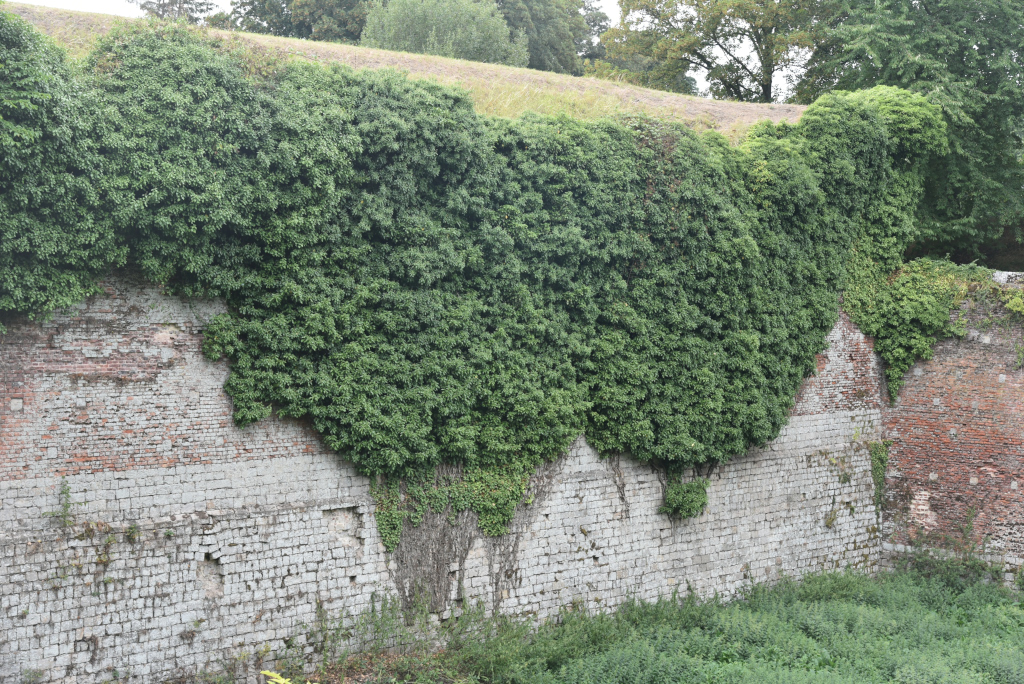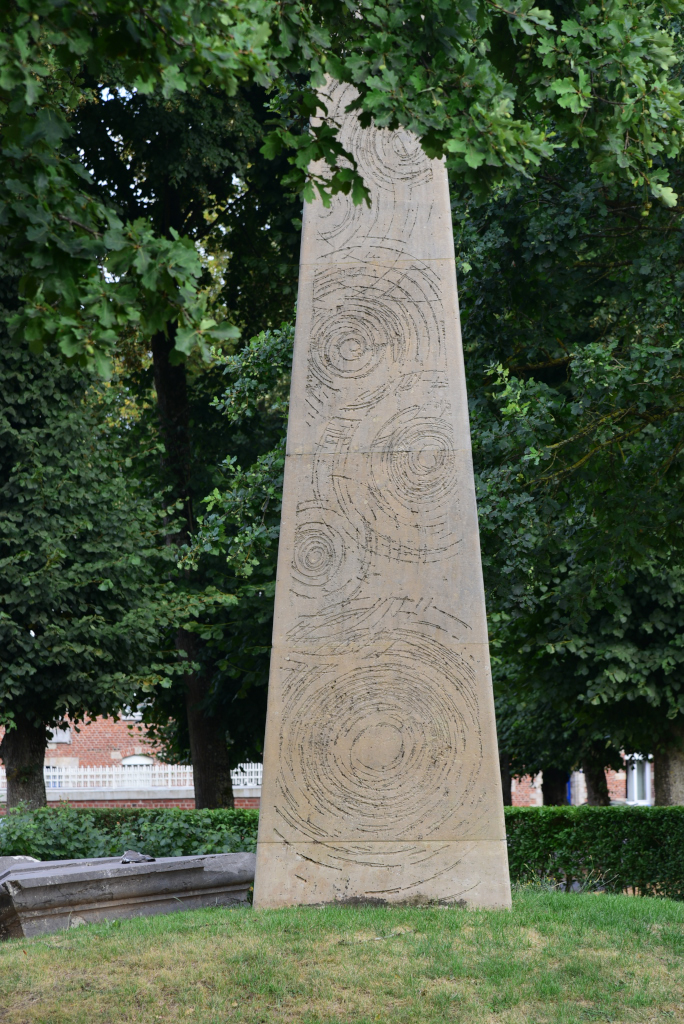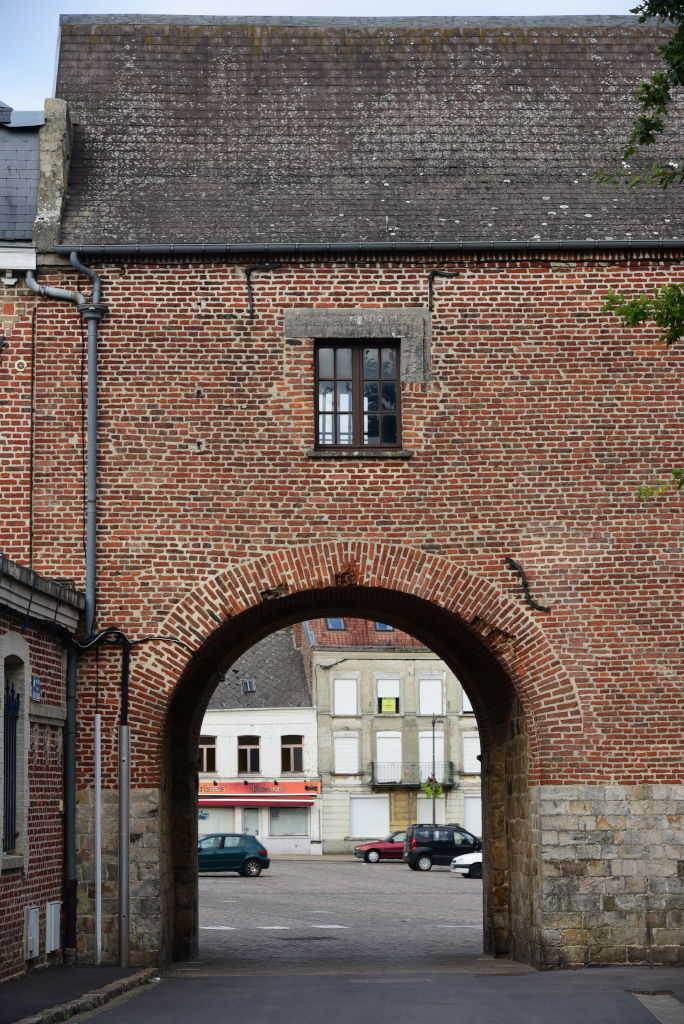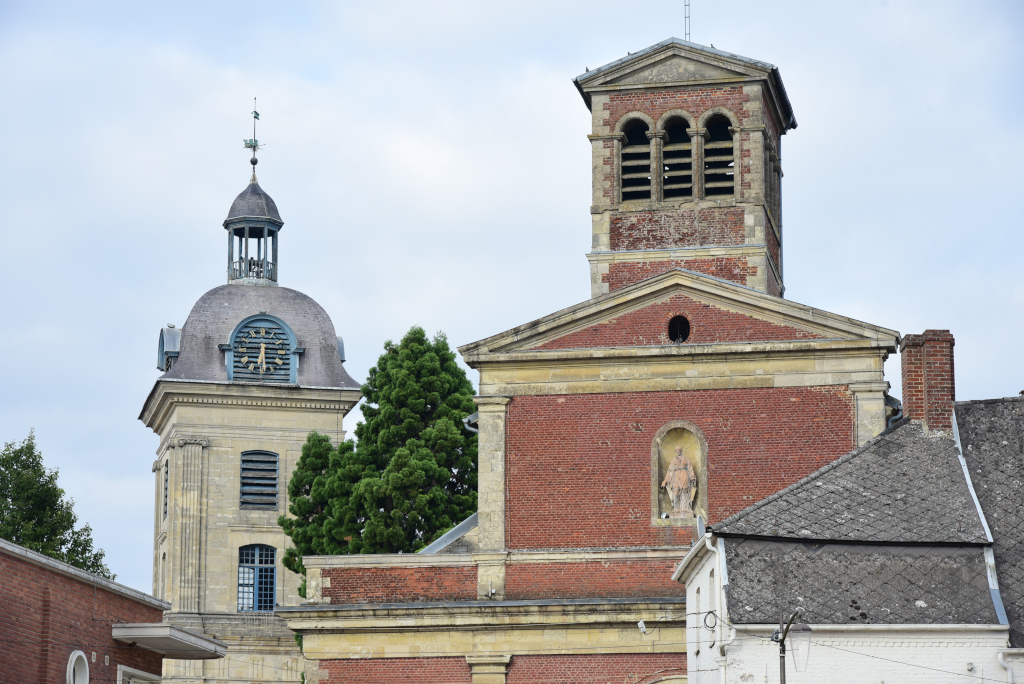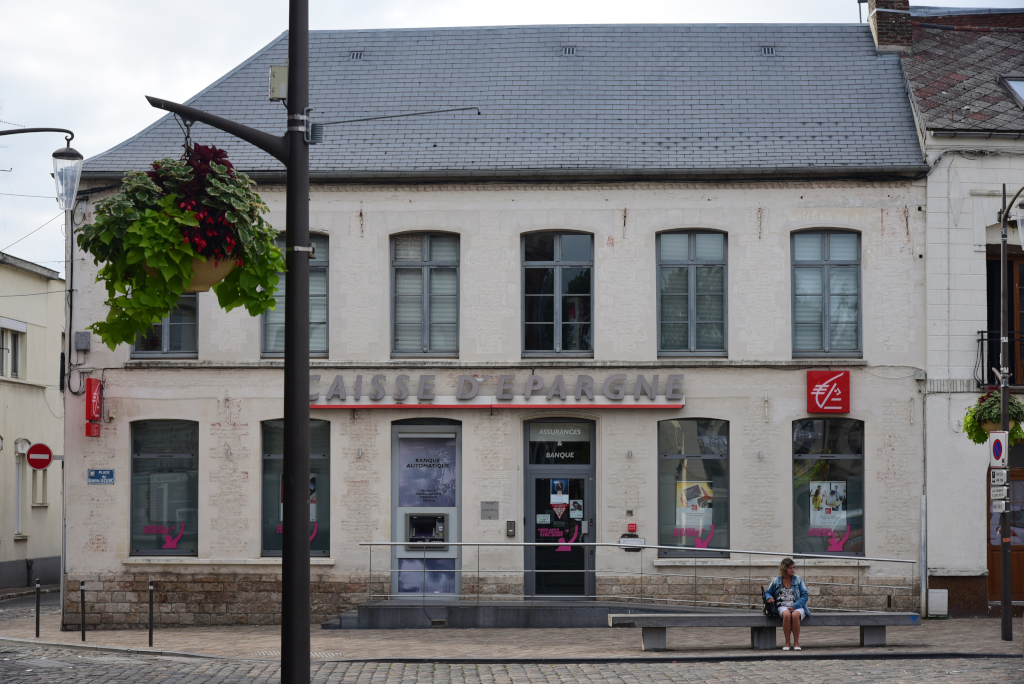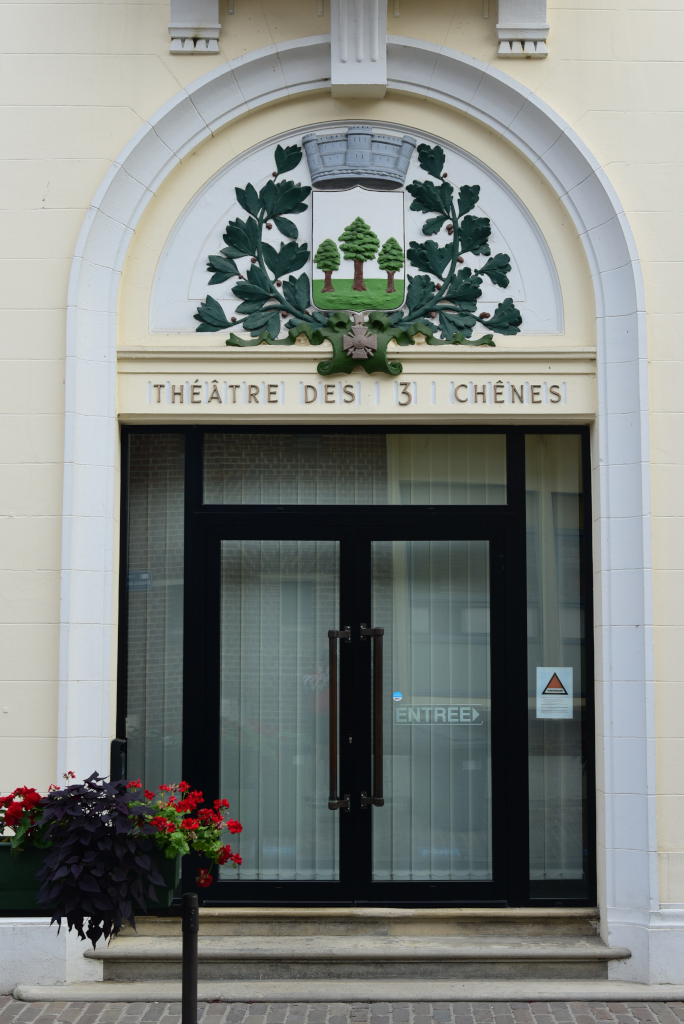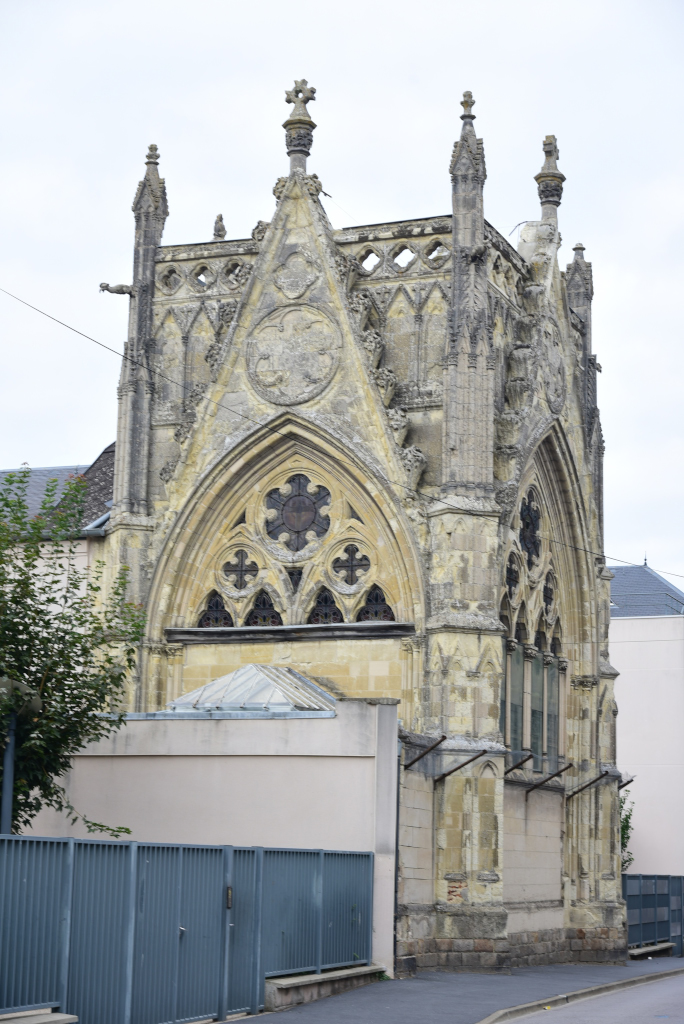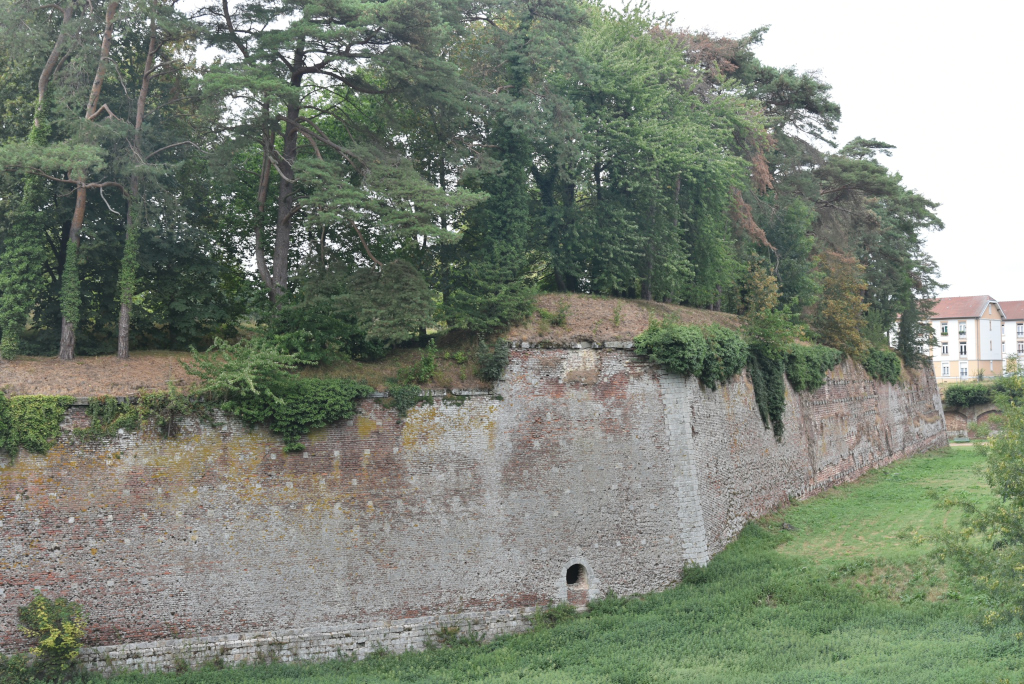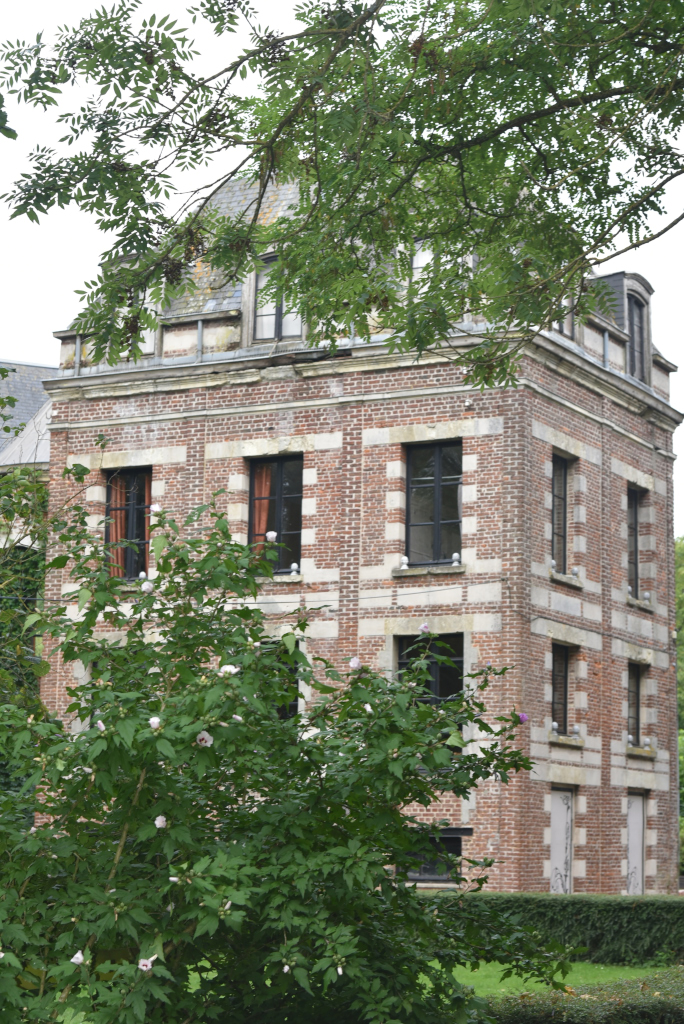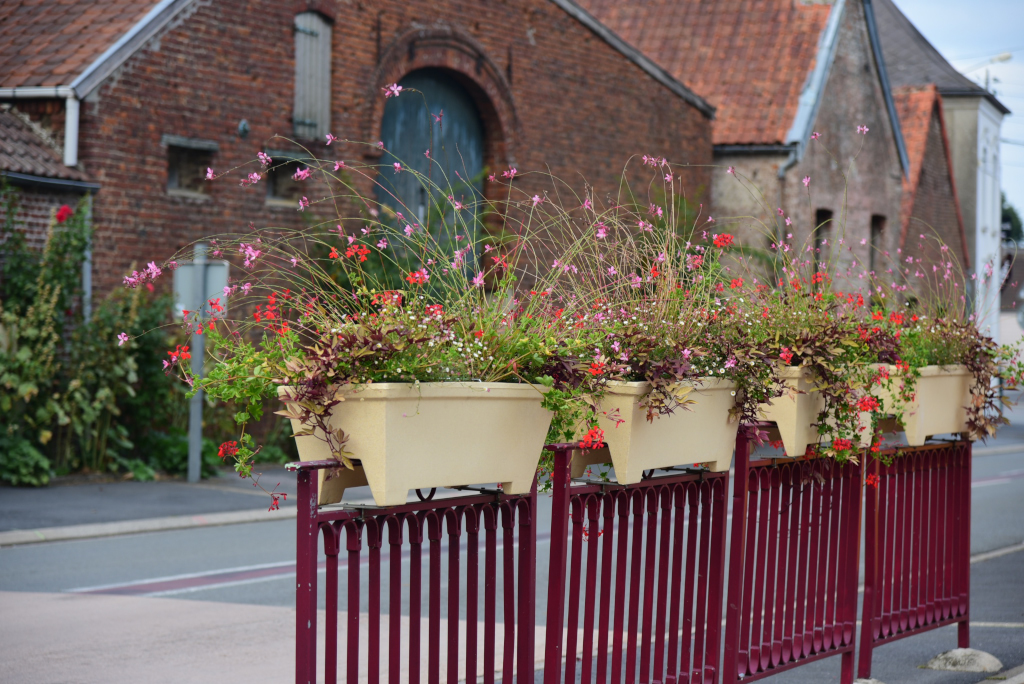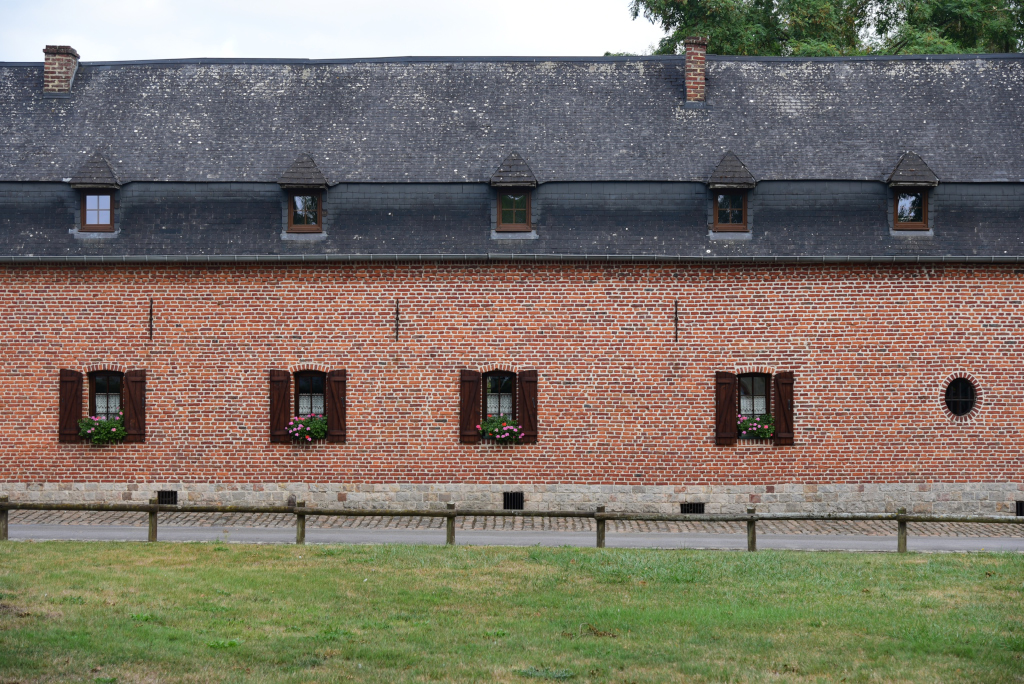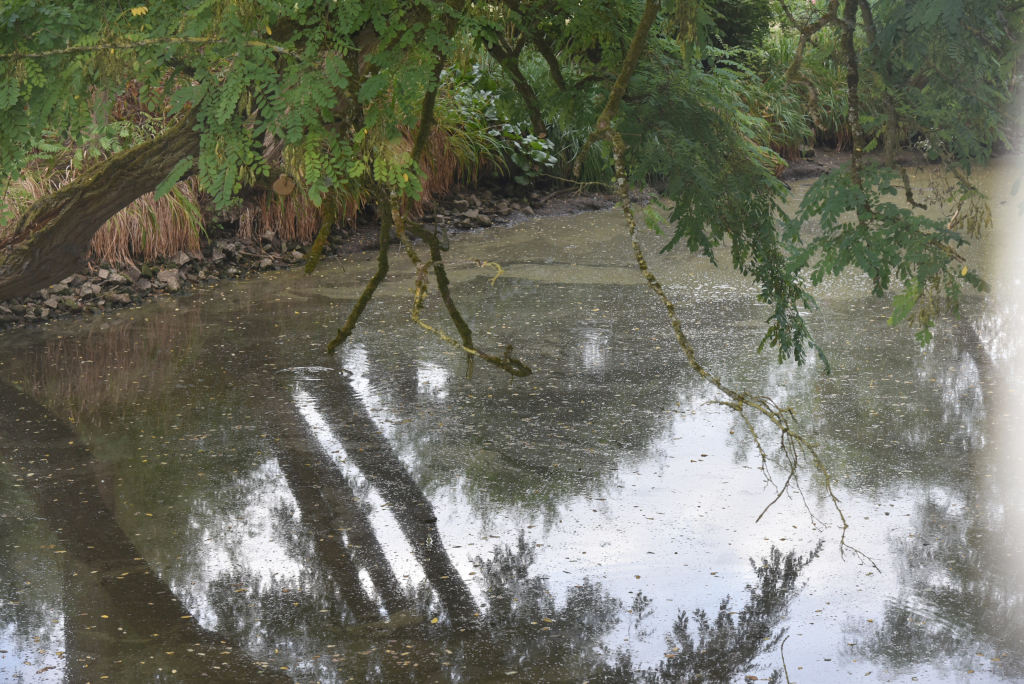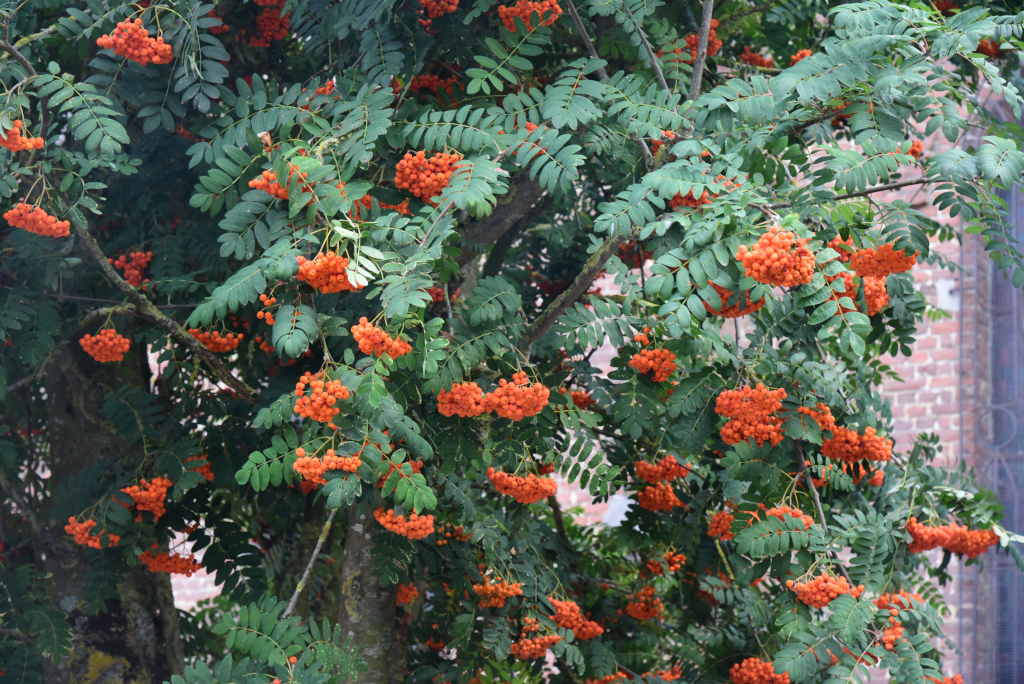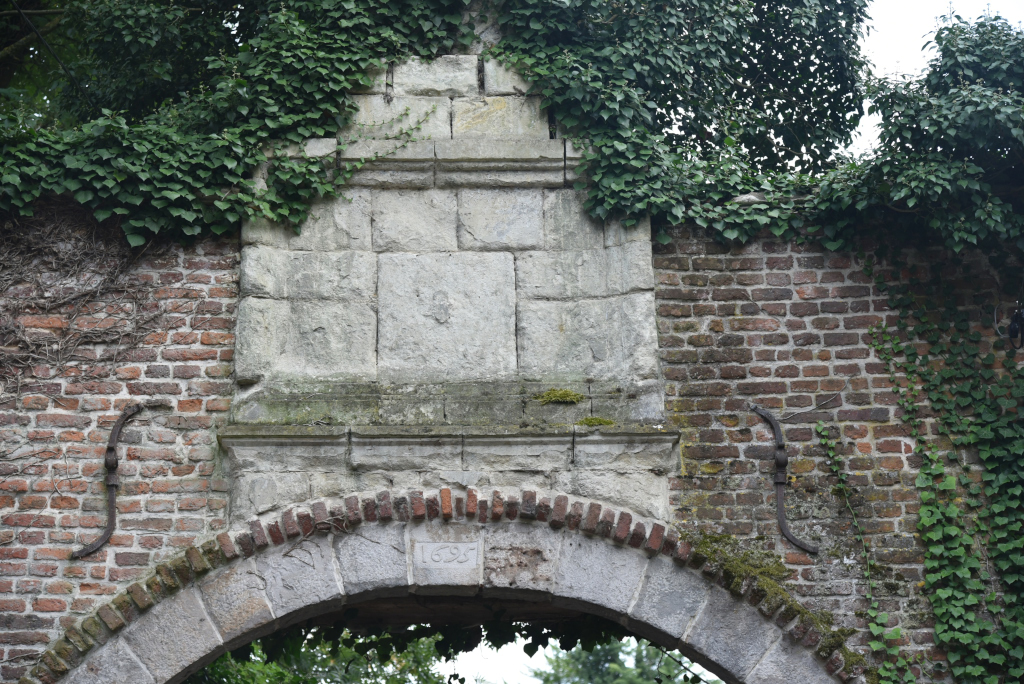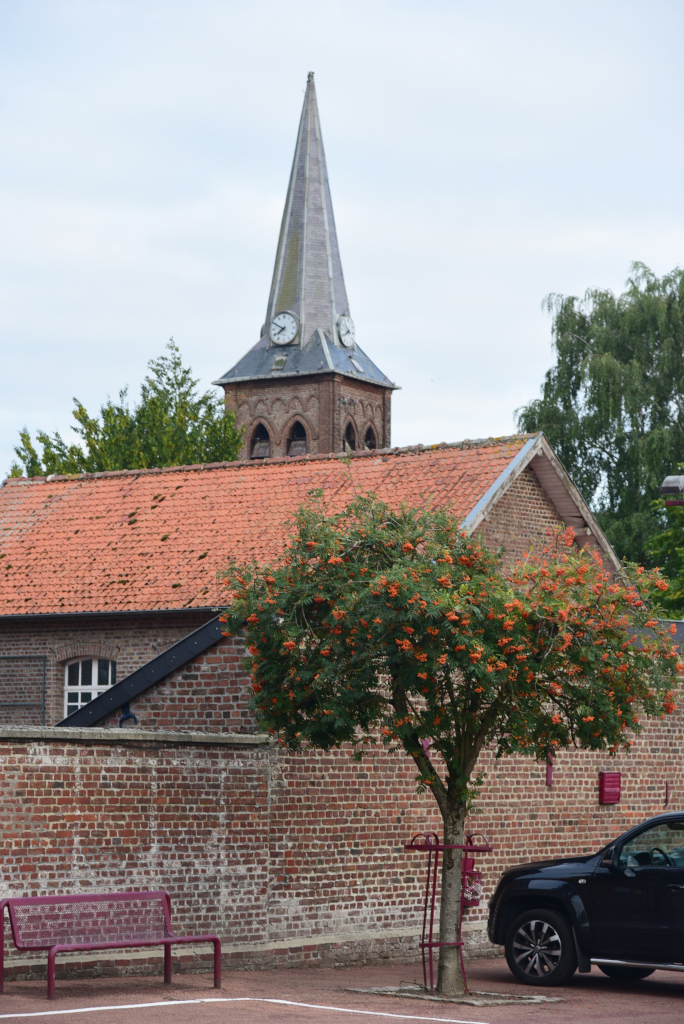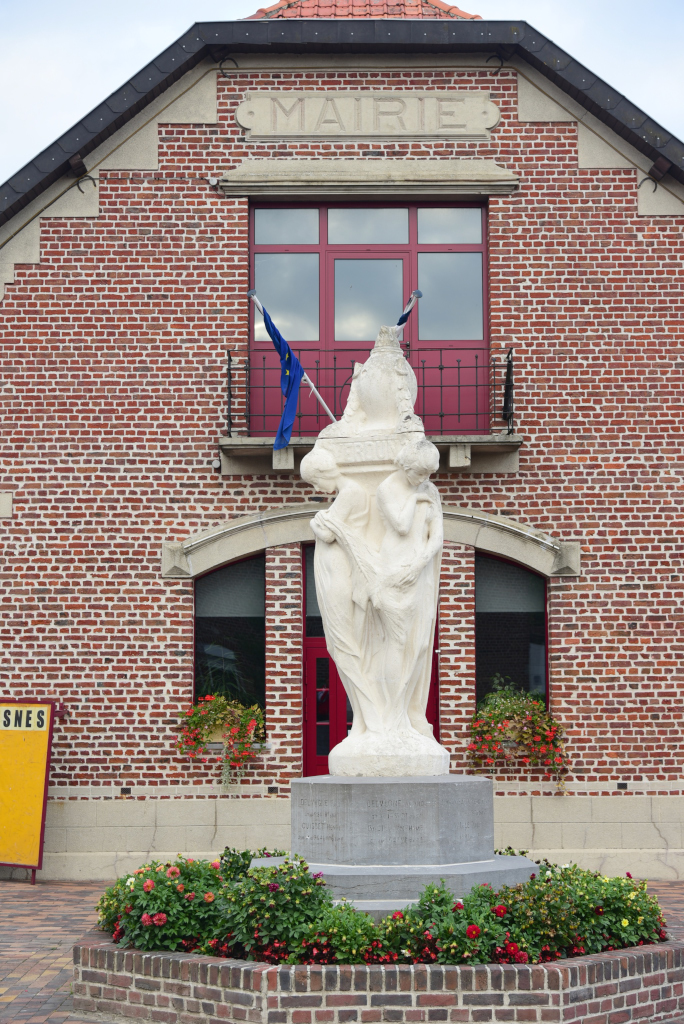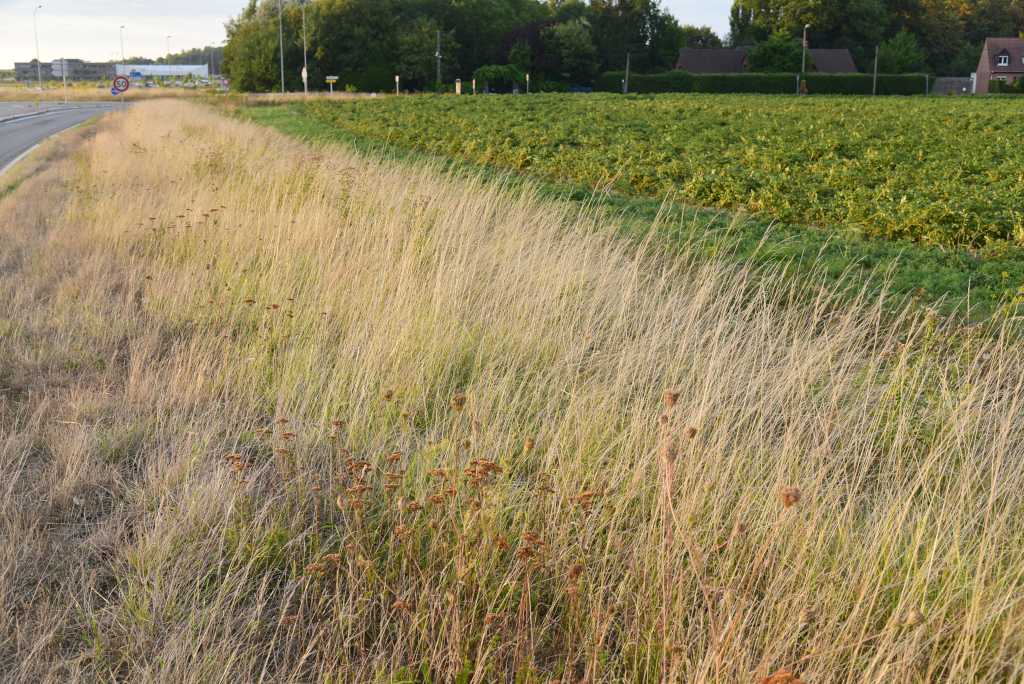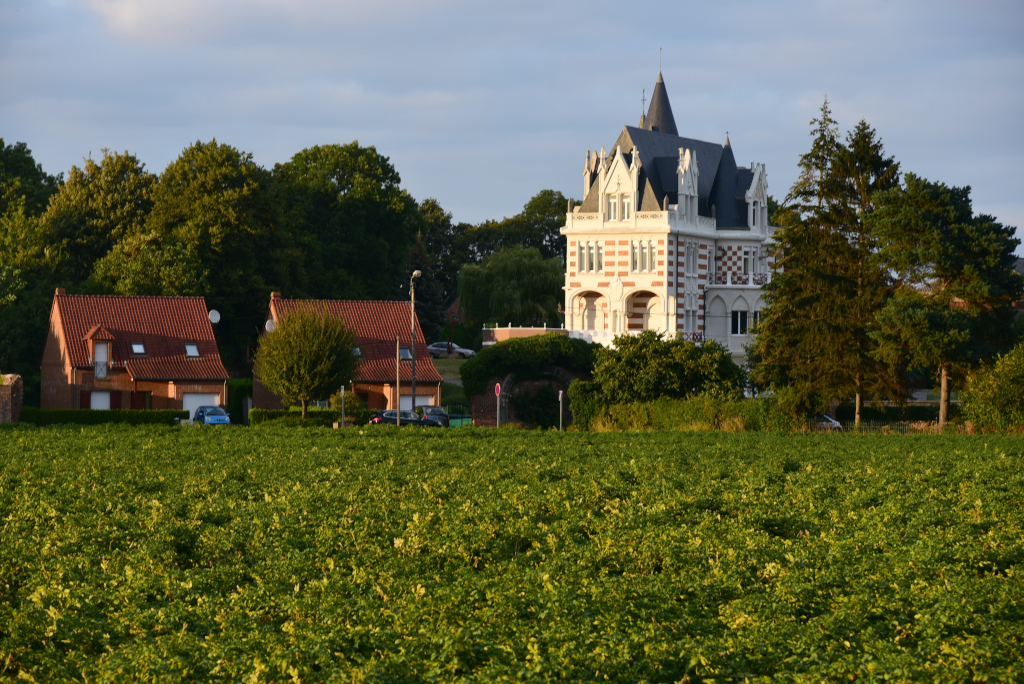August 15, 2018
I spend the day cycling around the perimeter of the Parc naturel régional de l’Avesnois lying to the east of Valenciennes. The Avesnois is the most forested region of Nord-Pas-de-Calais, and features hawthorn hedgerows planted in the nineteenth century and early twentieth century, when the region supplied apples to Paris. Its meadowlands and rich calcicultural grasslands contribute to its biodiversity. About 90 threatened or protected plant species have been identified in the area. The towns bordering the park span quite a range of styles, from small farming villages, historic burghs whose weathered facades bear witness to past glories, in addition to prim and immaculately maintained exurbs rich in floral and architectural detailing.
Sebourg sets the stage for the gems awaiting me on the trip through the Avesnois, smallish, innocuous, silent and cool on this overcast summer day, but rich in character and the possibility of discovery, a modest but impeccably maintained community that has won prizes for its outstanding beauty. Sheer medieval walls abut fecund fields rich in wild flowers and fruit trees, burst of thick grass erupt from cobblestones, the tall church tower an elegant sentinel, marking the passage of time with the precisely-timed pealing of its bells. The town is rich in contrasts, diminutive dormers set against a slate roof, elsewhere, terracotta tiles crown sheer walls of red brick, with artful metal benches framed against tall grasses waving in the passing breeze.
The evocative setting continues in the villages of Eth and Bry, populated by quaint dwellings almost overwhelmed by whimsical gardens, modest farmhouses next to sprawling estates, sheer stone and brick set against an explosion of greenery, blossoms and water, every turn giving rise to more astonishing vistas and a rainbow of colour.
Moving onto Bavay, an unpretentious town centered on a substantial Gallo-Roman excavation, pointing to the town’s importance in earlier times. It was occupied by the fierce Nervii in that era, and was considered of strategic military and commercial importance for centuries during Roman times.
A settlement was already present in the area of Le Quesnoy in Roman times, although more concrete documentation pertaining to the presence of a town appears in Carolingian times. In the mid-twelfth century, Count of Hainaut Baldwin IV surrounded the town of Quesnoy with ditches and ramparts, and also built the castle, which became the center of town fortifications. The town suffered the ravages of conflict between the French, Flemish, Austrians and Spanish, but missed more recent developments of the Industrial Revolution, largely due to lack of wealth underground and of a major transportation route.
By the early evening, the sun is low on the horizon, but I have at least avoided the rain that threatened to erupt during the day. Closer to Valenciennes, I arrive in Ruesnes, a simple burg home to elegant farmhouses, the barren alleys sprouting occasional clumps of flowering wildflowers, small squares featuring modest adornments, such as a statue commemorating the fallen from World War I, almost universal in this region of France.
(Narrative excerpted from Wikipedia)

